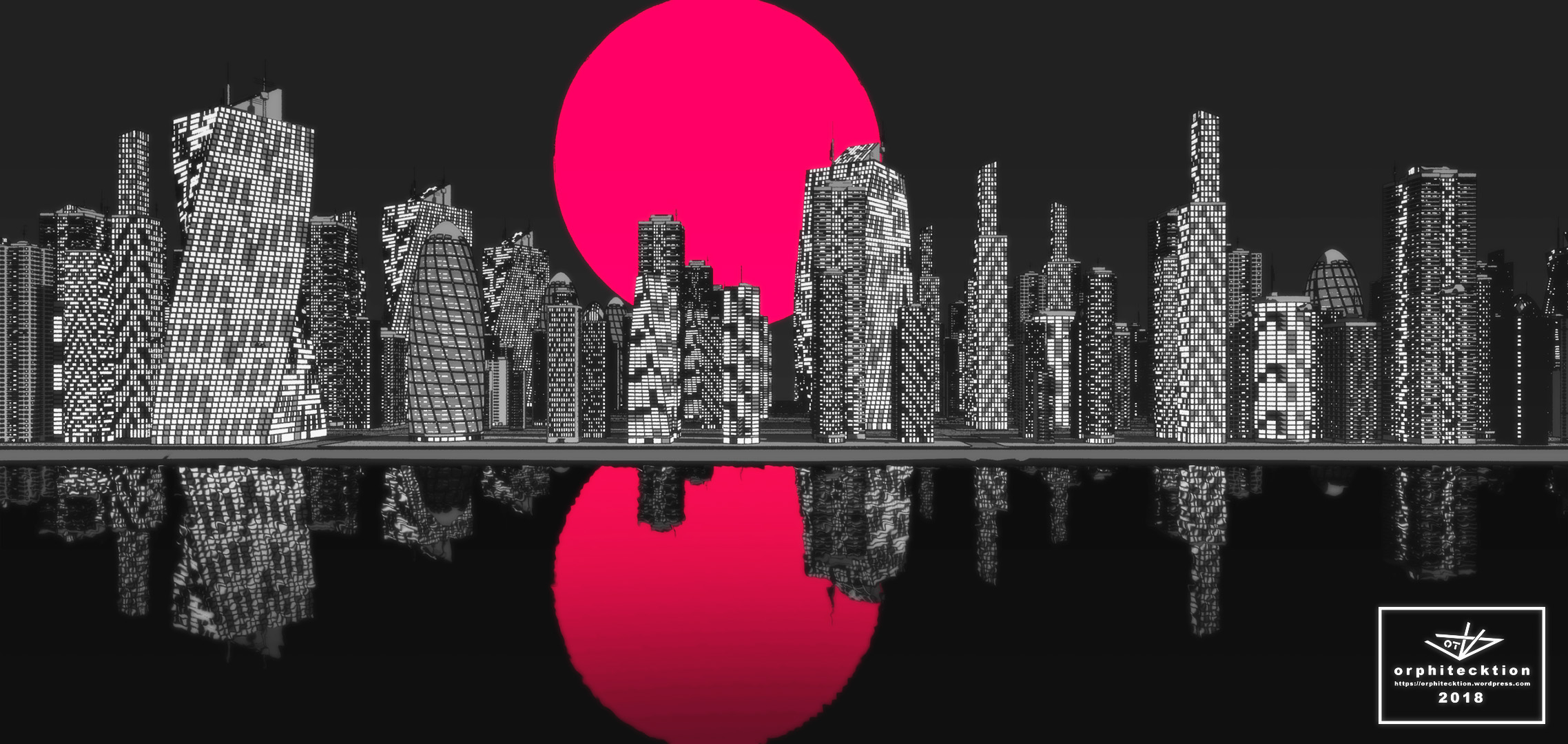mashup reel in cartoon shader style…
models, animation, visuals by jk.ot (dats me)
music by st.ot
decided cool monsters shouldnt hang out between primitive blocks but need actual environments…
ended up toying around with arrays methods…
IMM curves offer a bit more flexibility than straight up Array Meshes but are 3-4times as much work to set up
methods explored:
IMM curves:
pros/cons:
+can have really weird shapes
+once set up, quickly draw different height buildings/objects
-annoying to set up
workflow:
-make 3x3 box
-use ZModeller to crease one of its edges (in the middle somewhere)
-build top, mid and bottom section of house (3 polygroups, one subtool)
-create IMM and activate curve mode
-activate weld in brush after activating curve
-go to your subtool with the box with the creased edge
-click Frame “creased edges”
-gently, click, dont drag, ffs dont drag!, the created curve once, depending on brush size you get a different amount of storeys/arrays
(the whole crease edges, gentle click thing is just to get a straight 90°/tangential curve along which to create the building… didnt find a way to draw out correct world angles, straight line is ok but it might be the tower of pisa)
Array Mesh:
pros/cons:+fast to set up and modify on the fly
+sliders to change parameters, no gentle clicking needed
-needs post work to add roof and basement
workflow:
-build storey (top and bottom should be of the same polygroup)
-activate and set up array mesh (repetitions would be the same value as y offset in the case of a skyscraper)
-in my case, deactivate extrude
-click make mesh
-geometry-> modify geometry ->weld points (range 1)
-add roof and basement
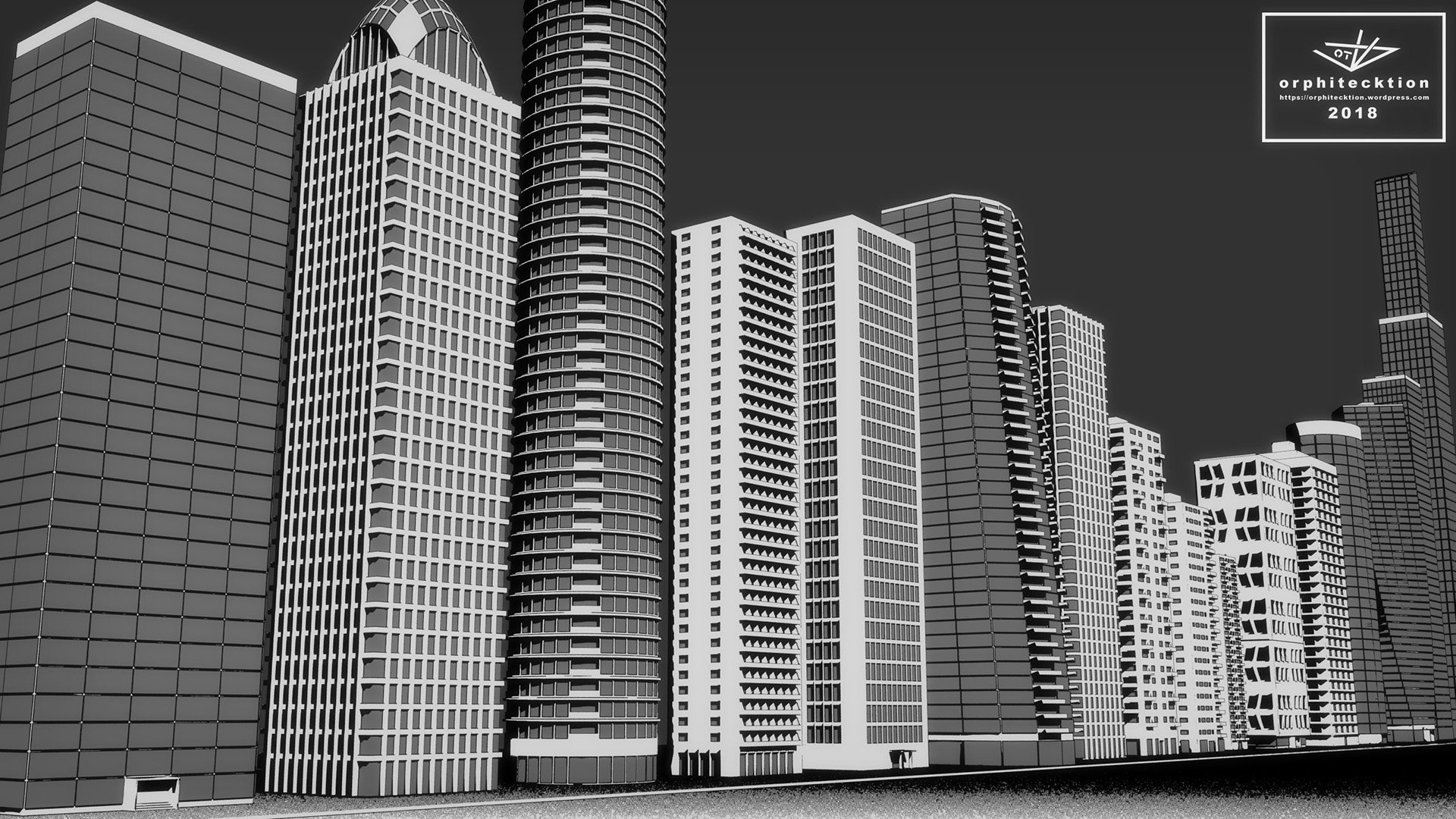
Attachments

aha ahaaa! i finally found a limitation in ZB… !!! 
i found a bug here and there over the years, maybe a few weird things, but i think thats the first real technical limit…
doesnt depend on performance either
when you work on really large (as in size, not points) objects, in my case a city with a looong strip of road, you eventually get to a point where ZB simply ignores half of it.
you can mask the whole strip (only 100k points or so), but only half of it will actually be affected by whatever you do.
this is not dependend on screen zoom, whats on screen however defines the center of this circle of reach, as i would call it, in which you can affect geometry, but the reach range stays the same,
if you want to work on the unaffected bits you have to move the screen there.
i assume its related to the 1000x1000 units max size for stuff in dynamesh.
urban pattern exploration: Kowloon
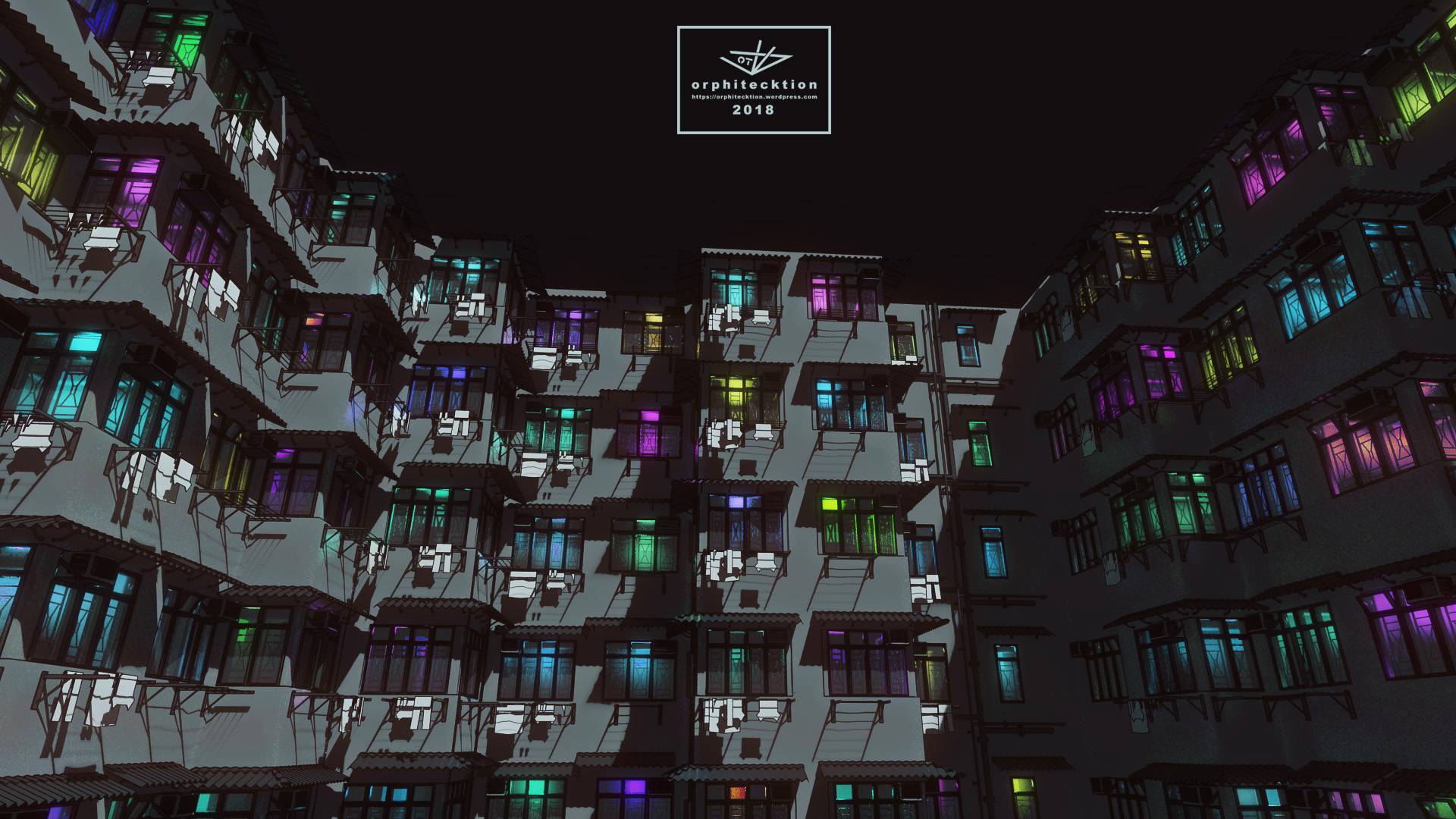
Attachments

very cool. thank you for sharing.
thanks gabo1991 
redone the last idea,
more array meshing, cartooneering, post processing and urban pattern exploration
its more like what i was going for, still a bit too bright imo, somehow ended up going for a nice sunny vibe… might redo that again to get the darkness i want. 
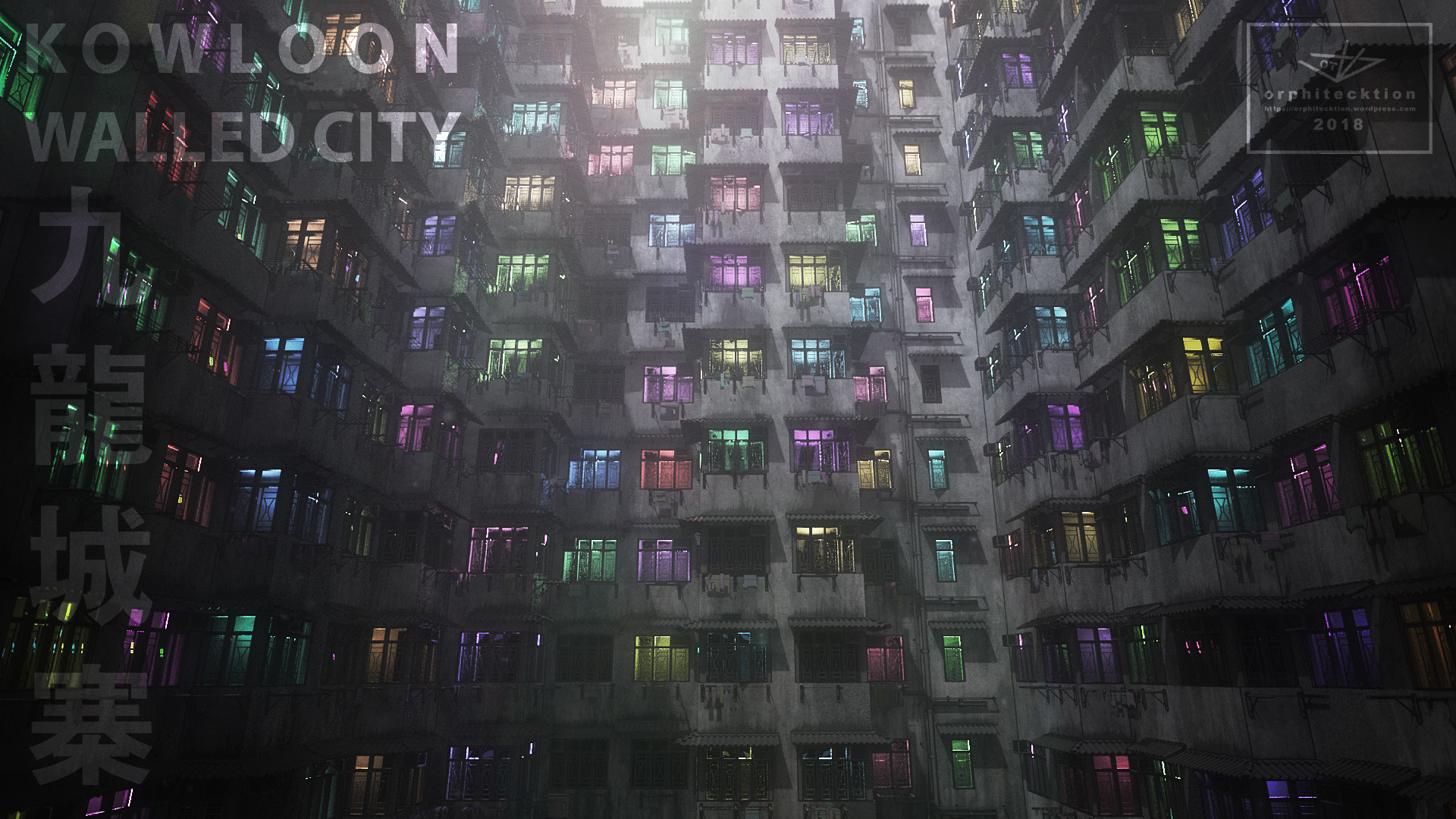
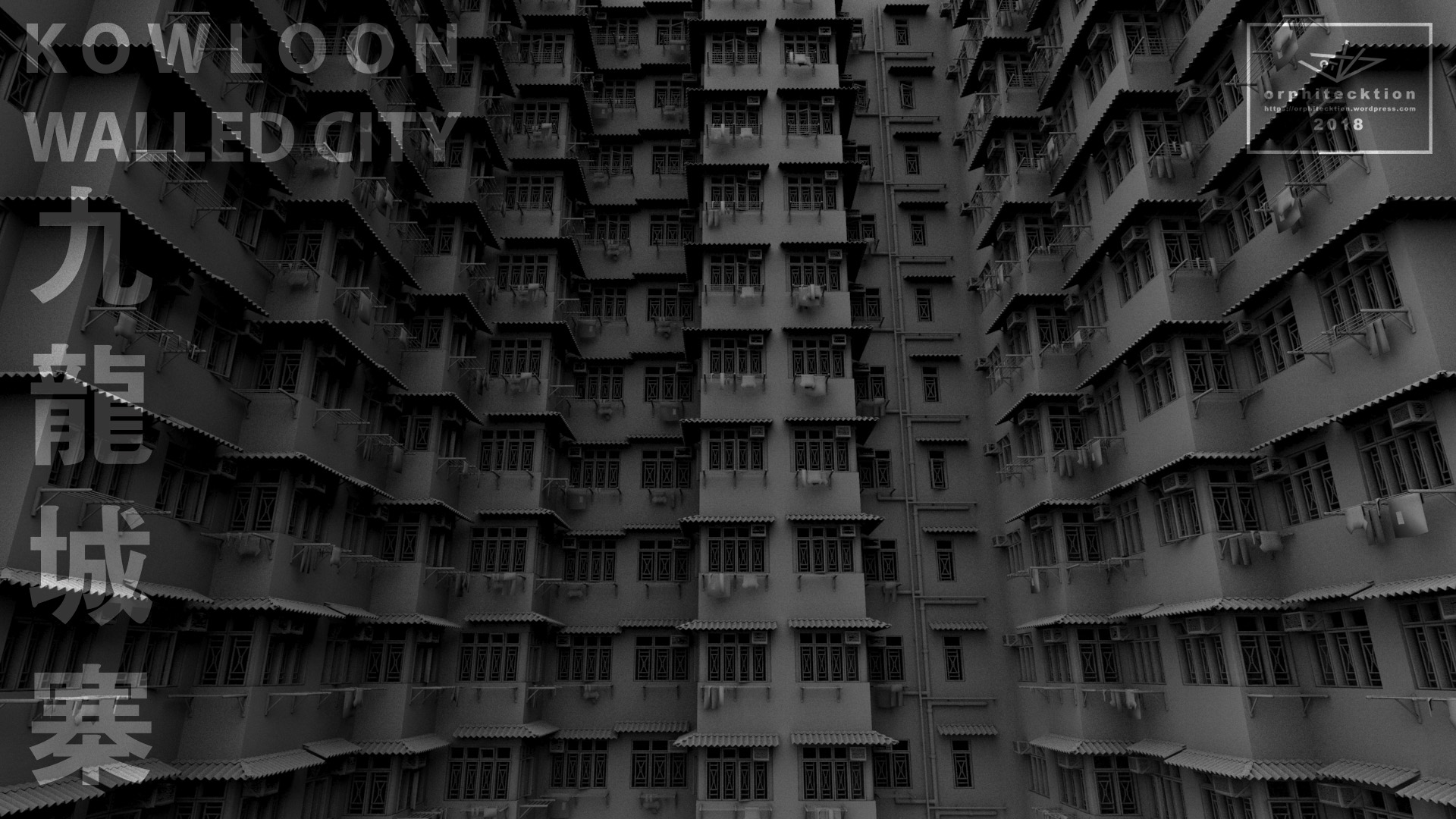
Attachments


Kowloon - An Alley
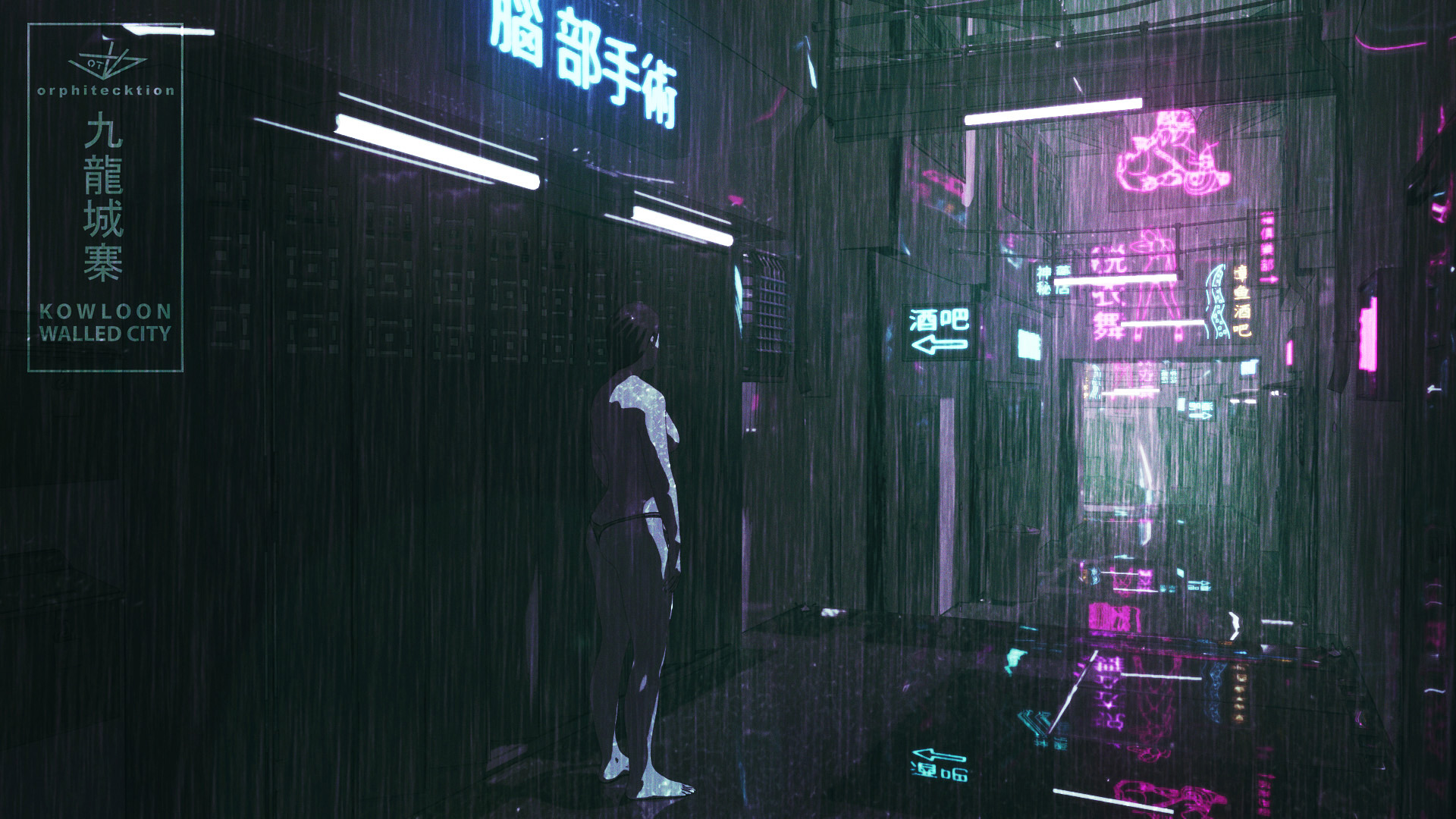
breakup
full on low poly zmodeller, post layer vodoo
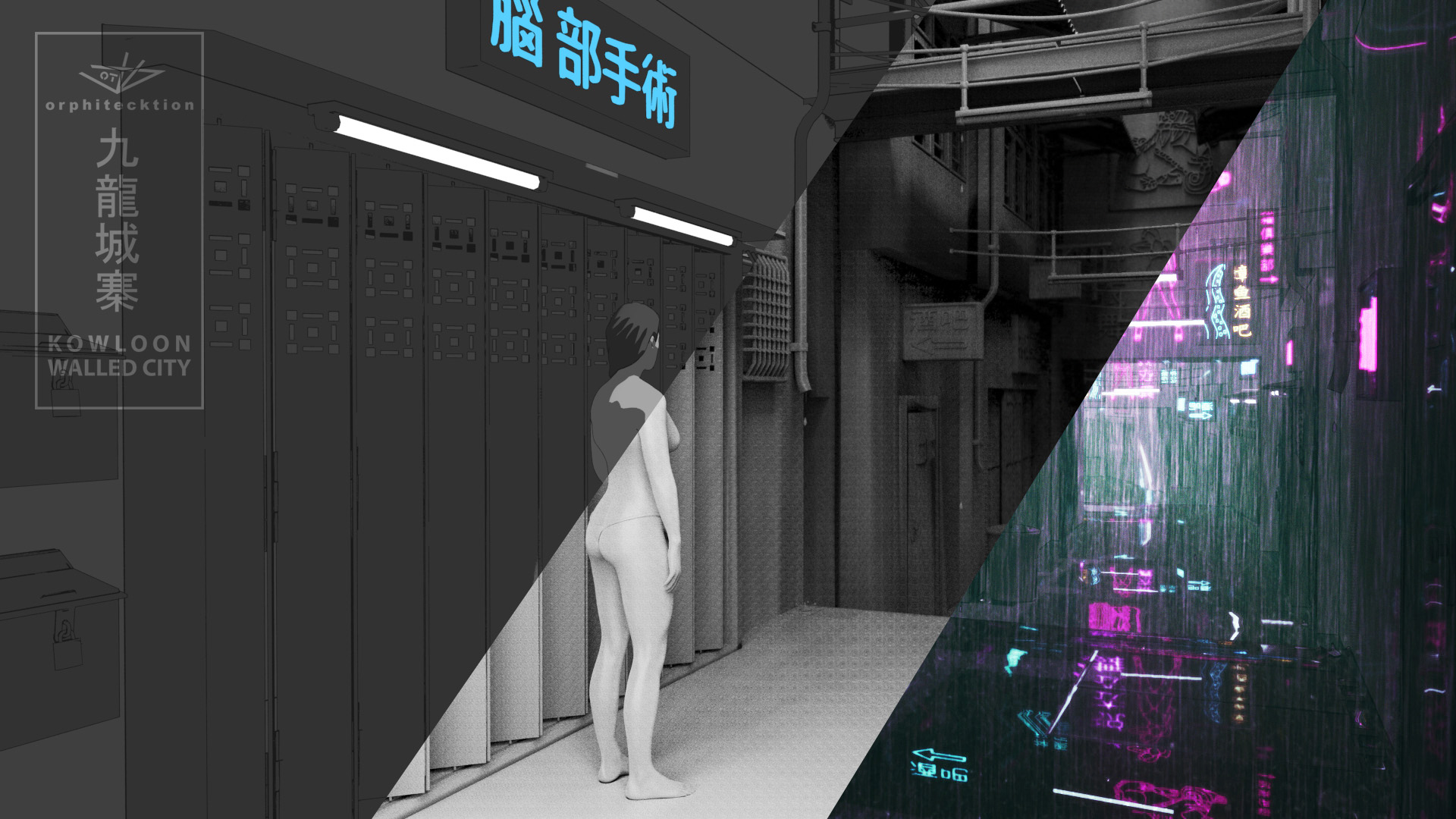
method to create “clean” text objects, or any alpha stencil really

Attachments



The default cube primitive has two poles which are hard to Zmodel (poly model).
Therefore i buildt this fine and elegant cube with only 6 faces.
(to get a cylinder: polygroup two opposing polygons, crease polygroups, subdivide)
Cube Primitive - 6 Quads
*.OBJ file 1kb in the *.zip

0JBasicCubeOBJ.zip (586 Bytes)
maybe some of you will find this sophisticated geometrical shape useful aswell.  0JBasicCubeOBJ.zip (586 Bytes)
0JBasicCubeOBJ.zip (586 Bytes)
Workflow:
Architectural Environment Models from a grayscale map in ~30minutes
more sophisticated and cleaner than just extruding an alpha image, yet still rather simple and fast
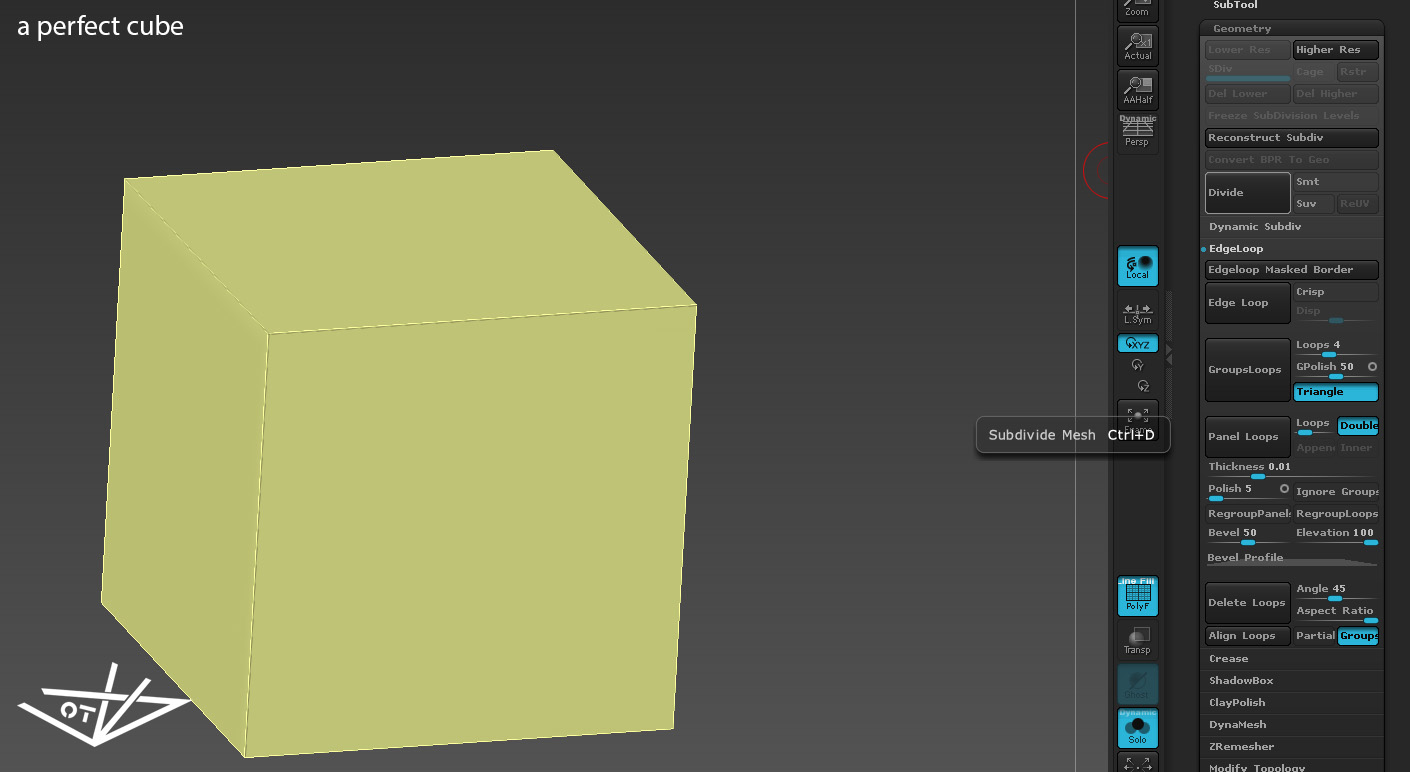
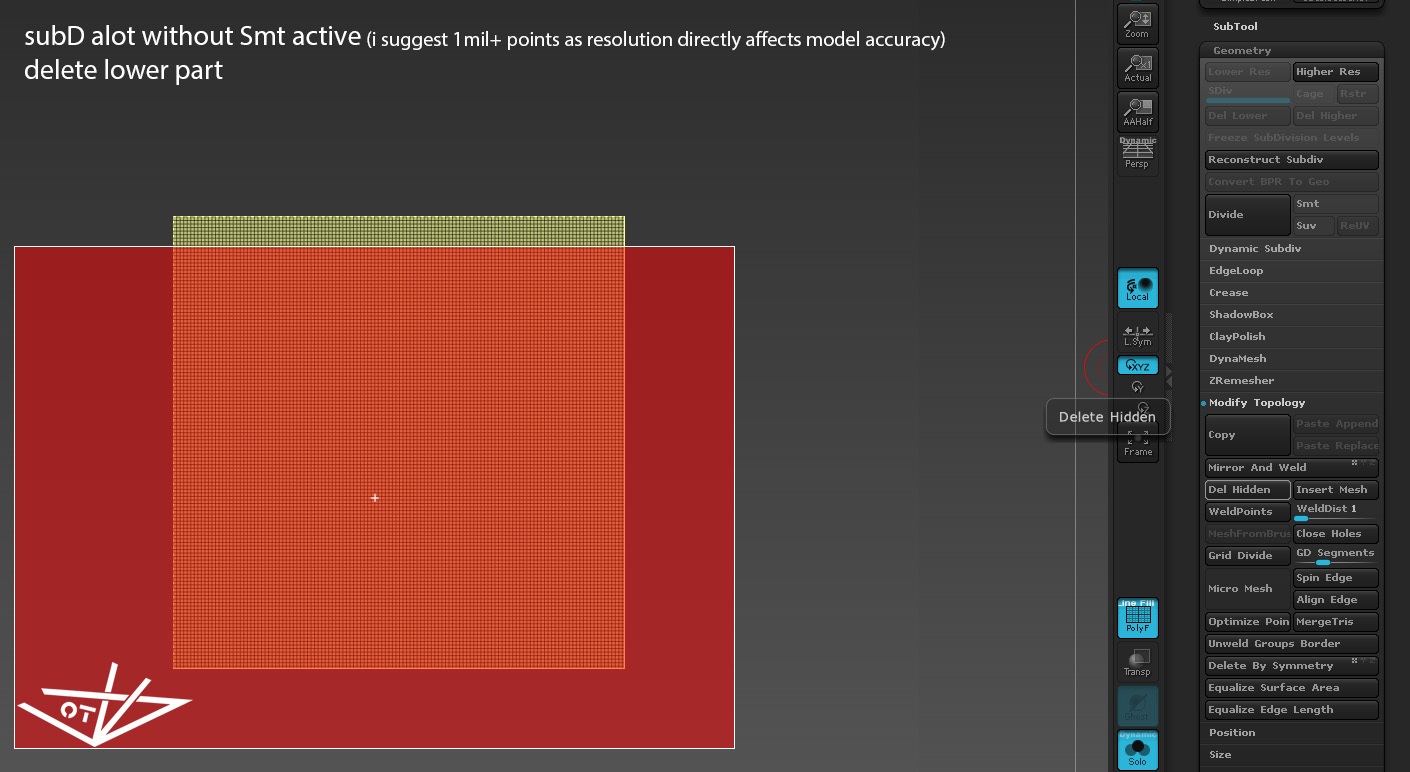
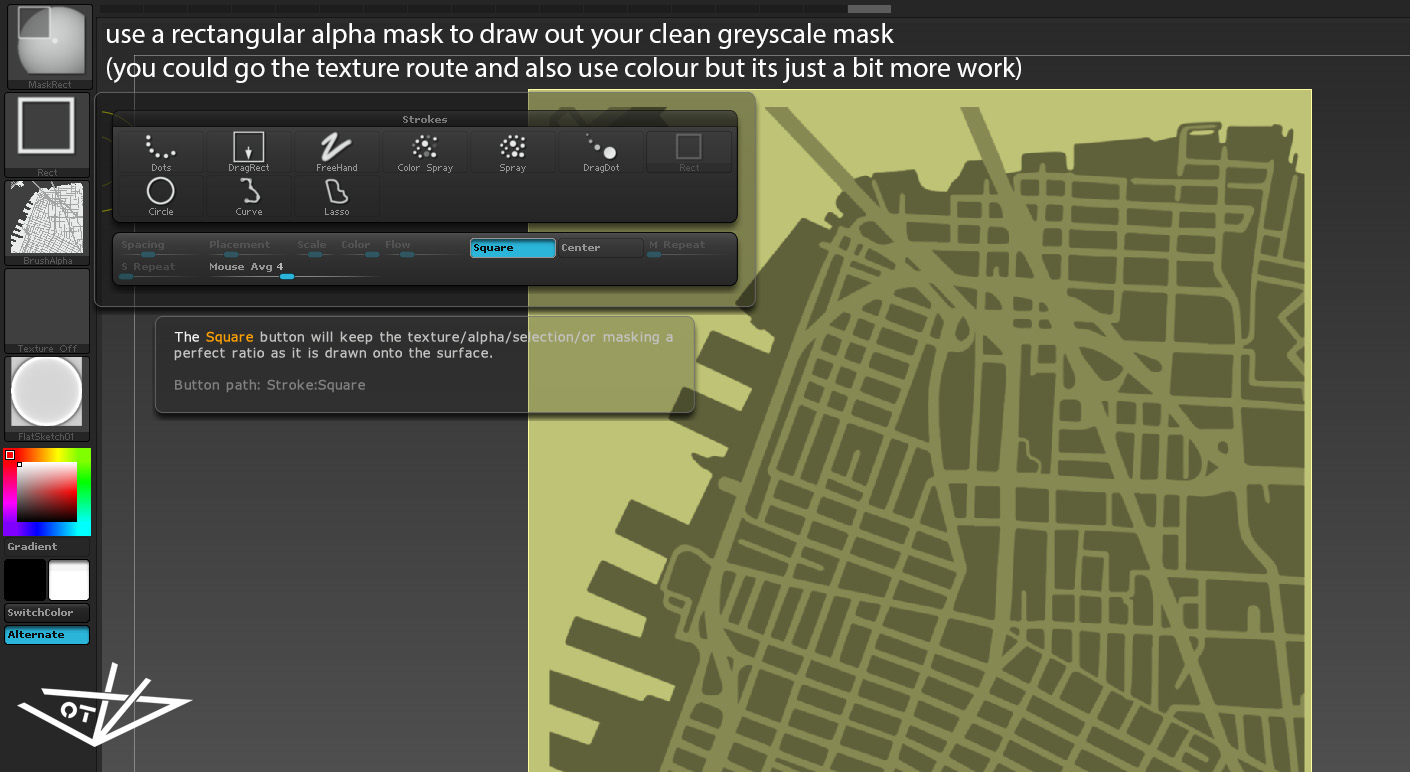
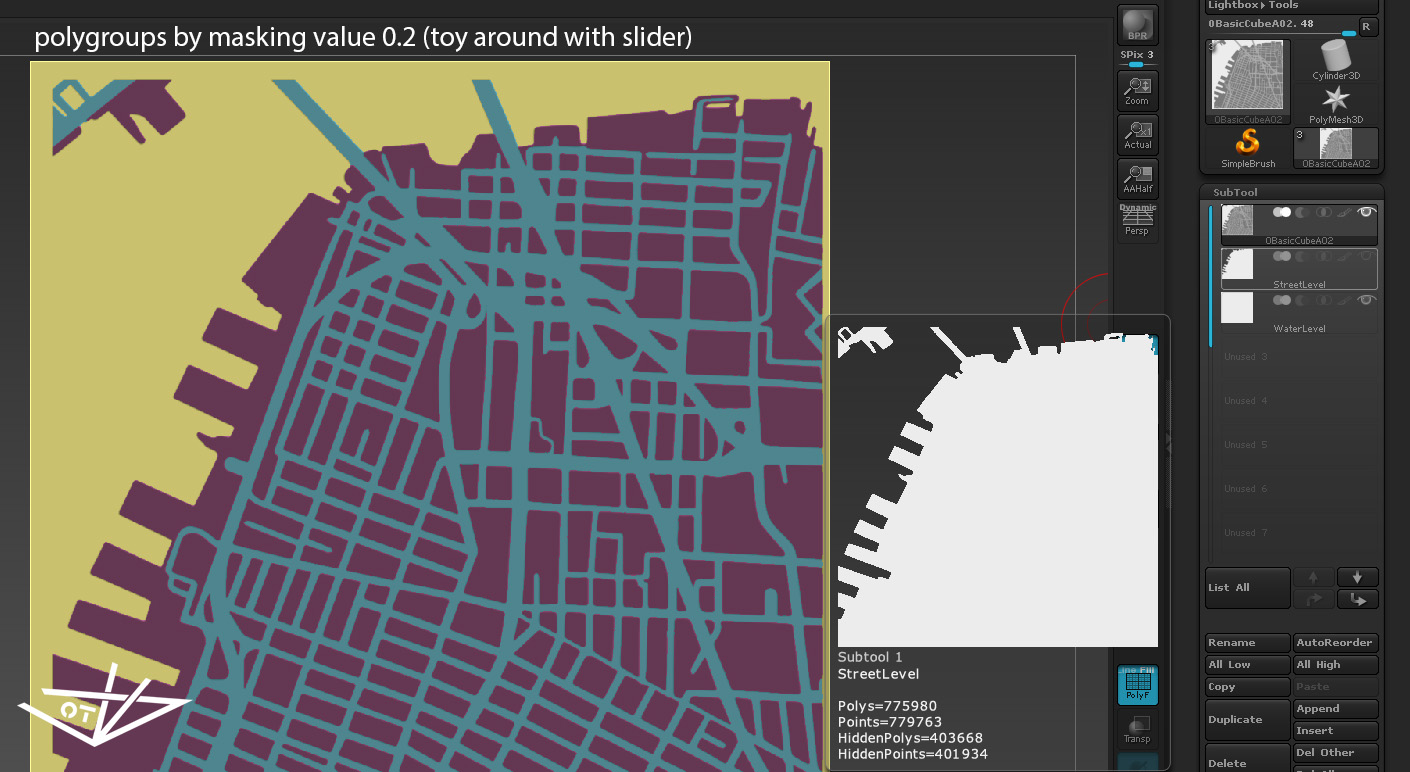
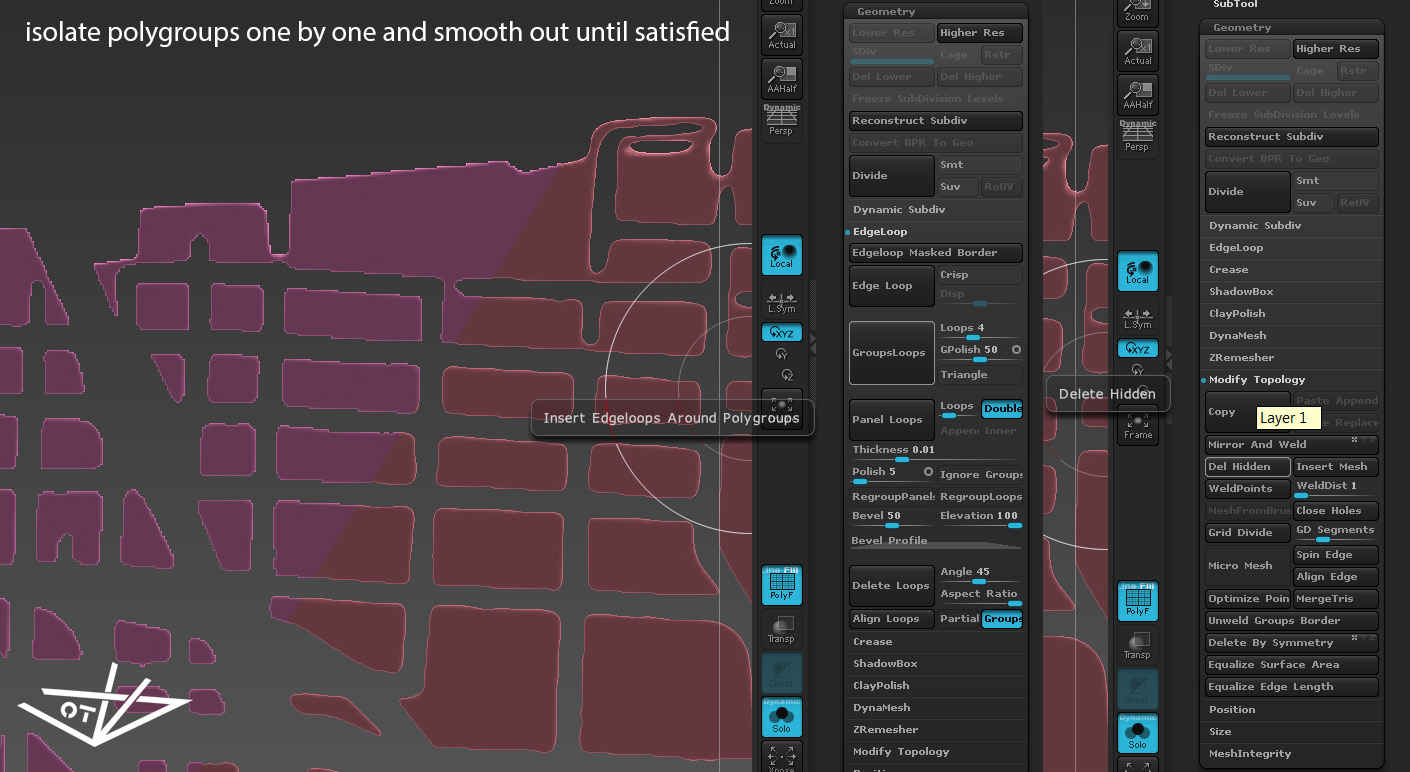
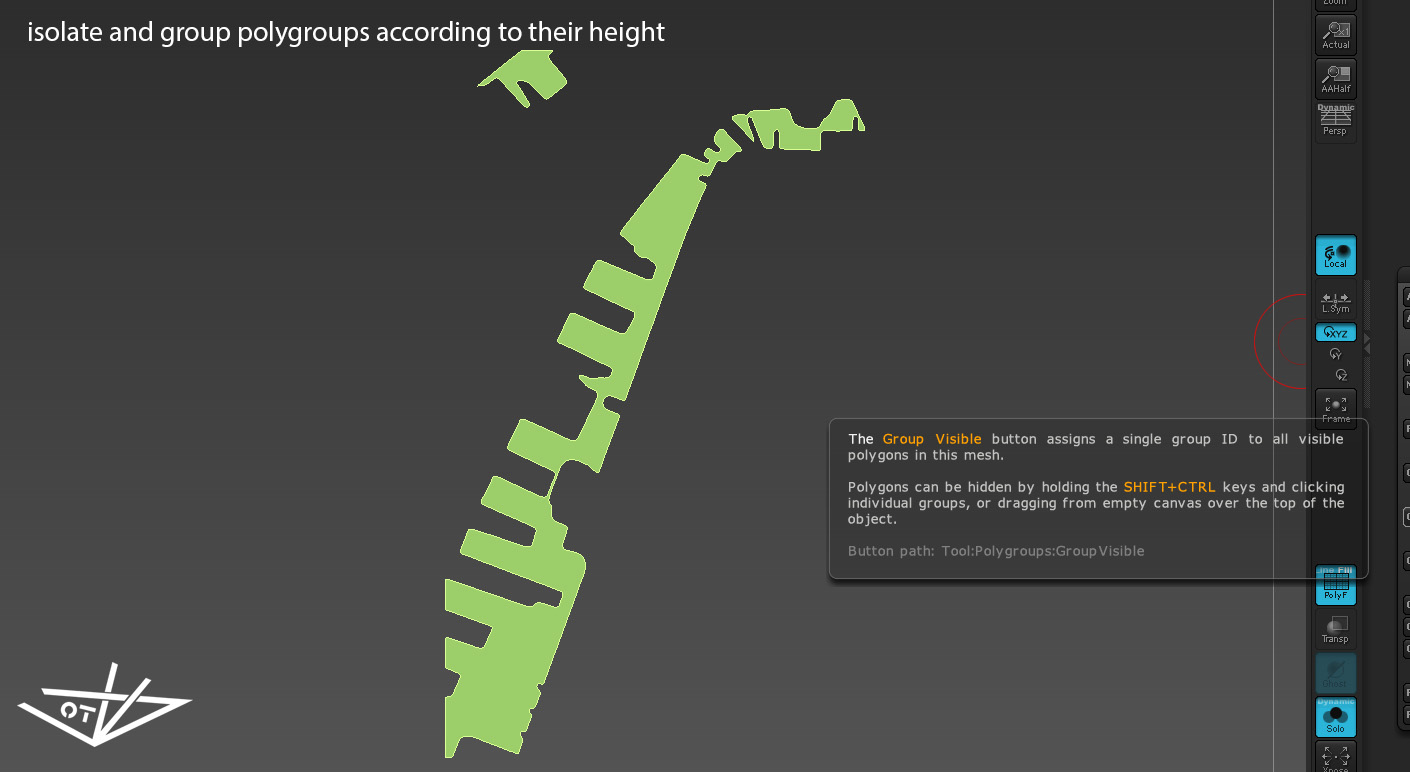
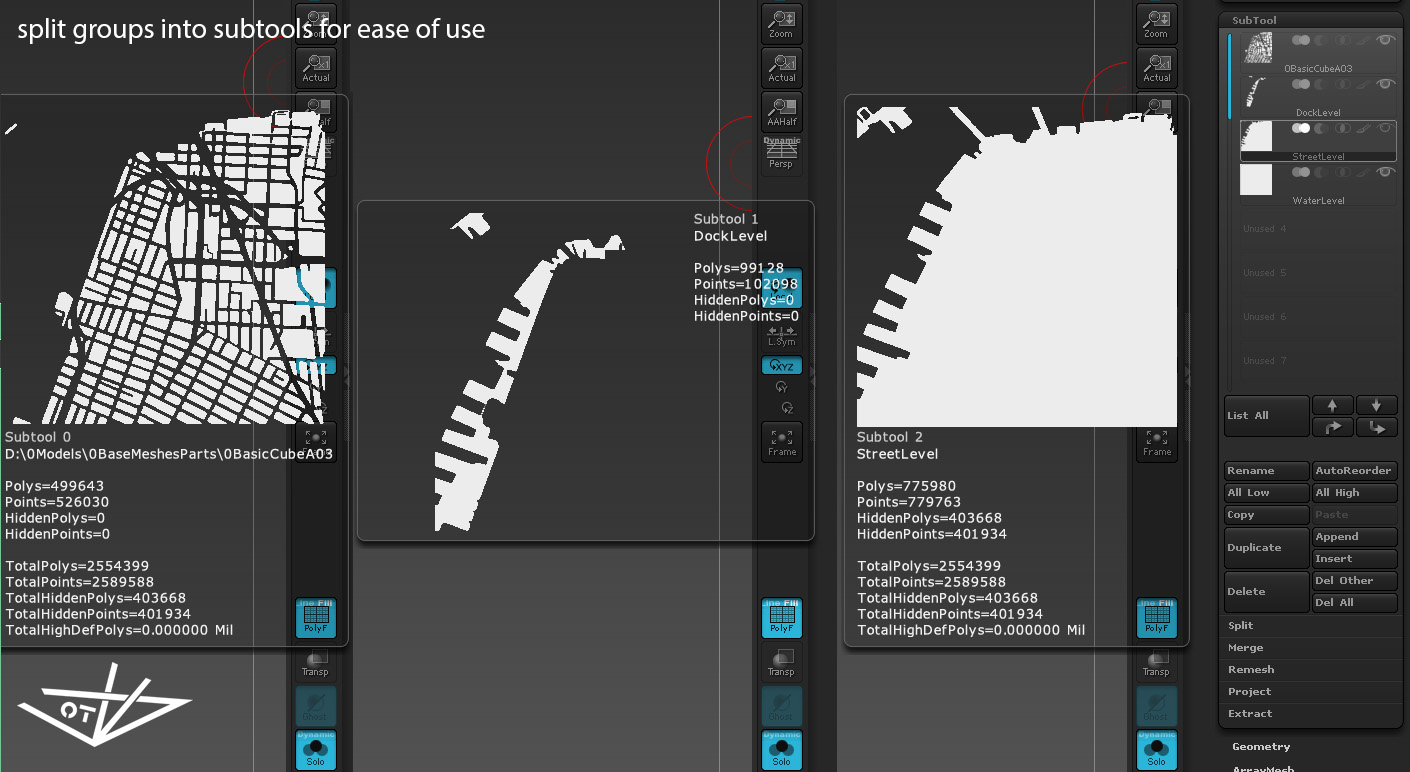
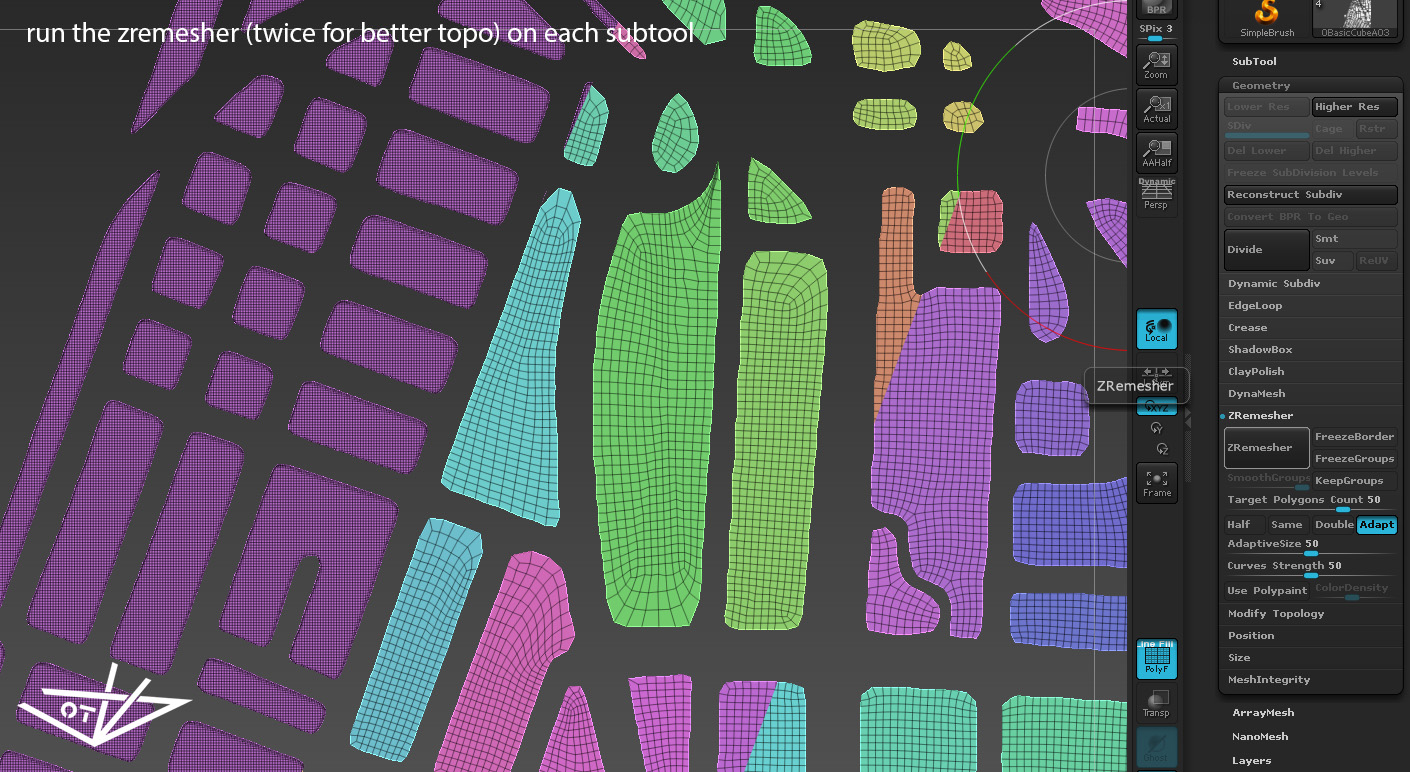
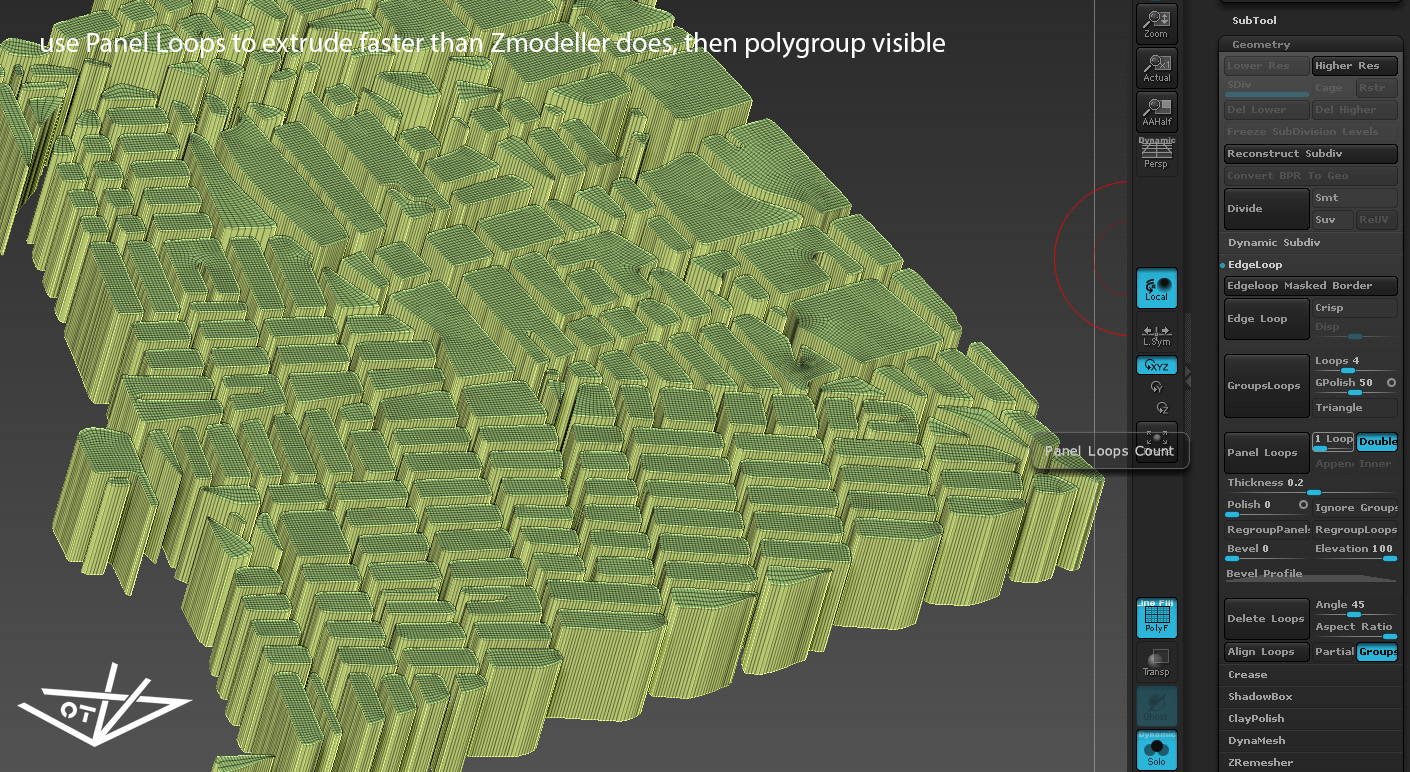
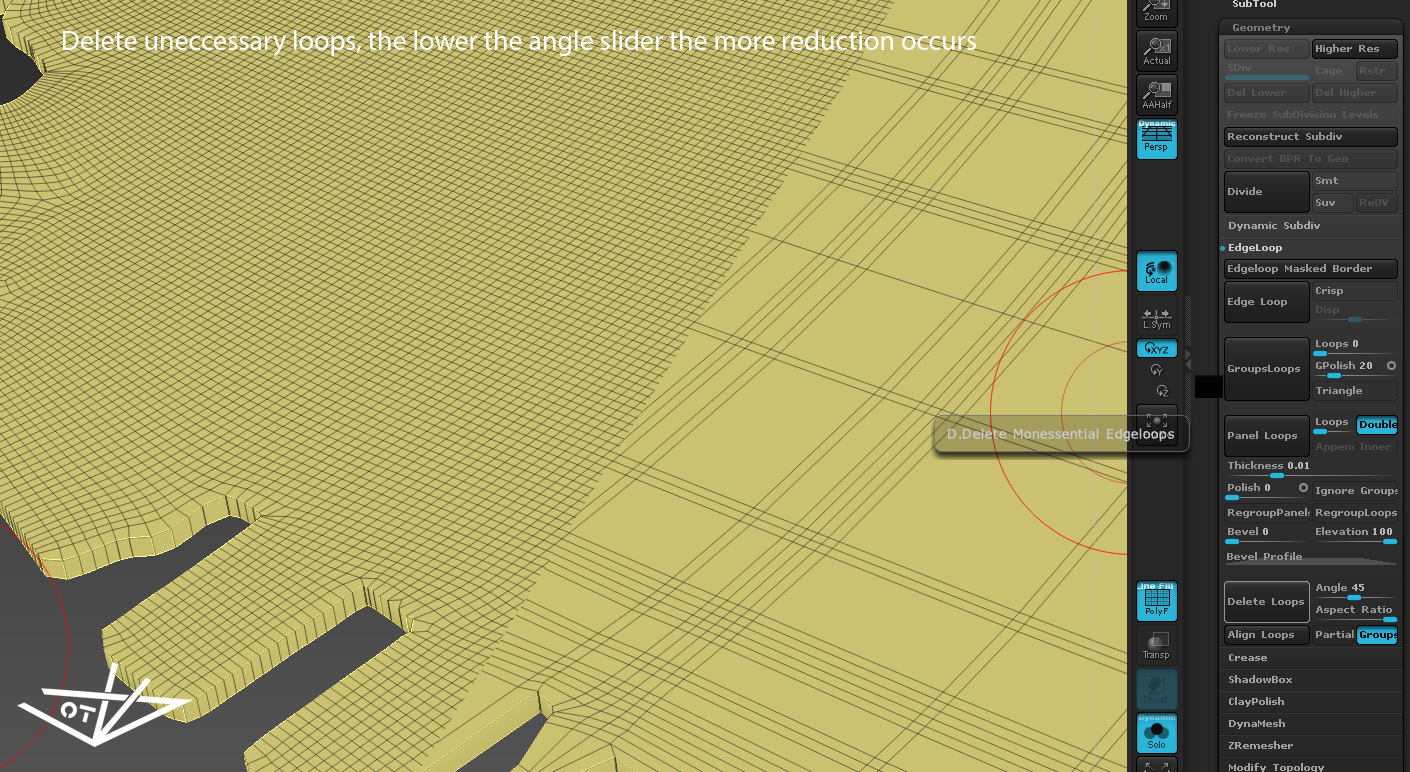
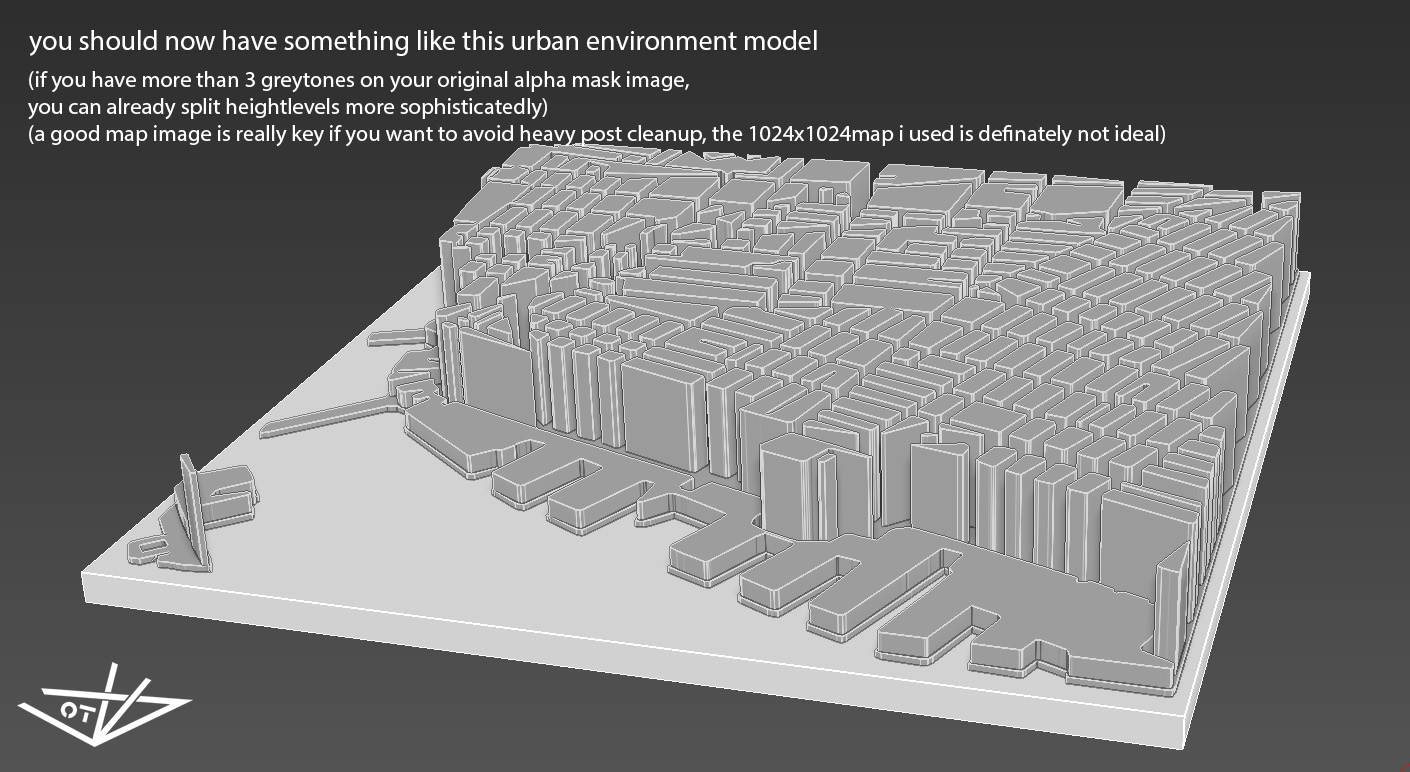
Attachments











taking the simplified map of Brooklyn from the last endavour further,
exploring different takes on creating an urban environment for planning, LOD or shiny renders
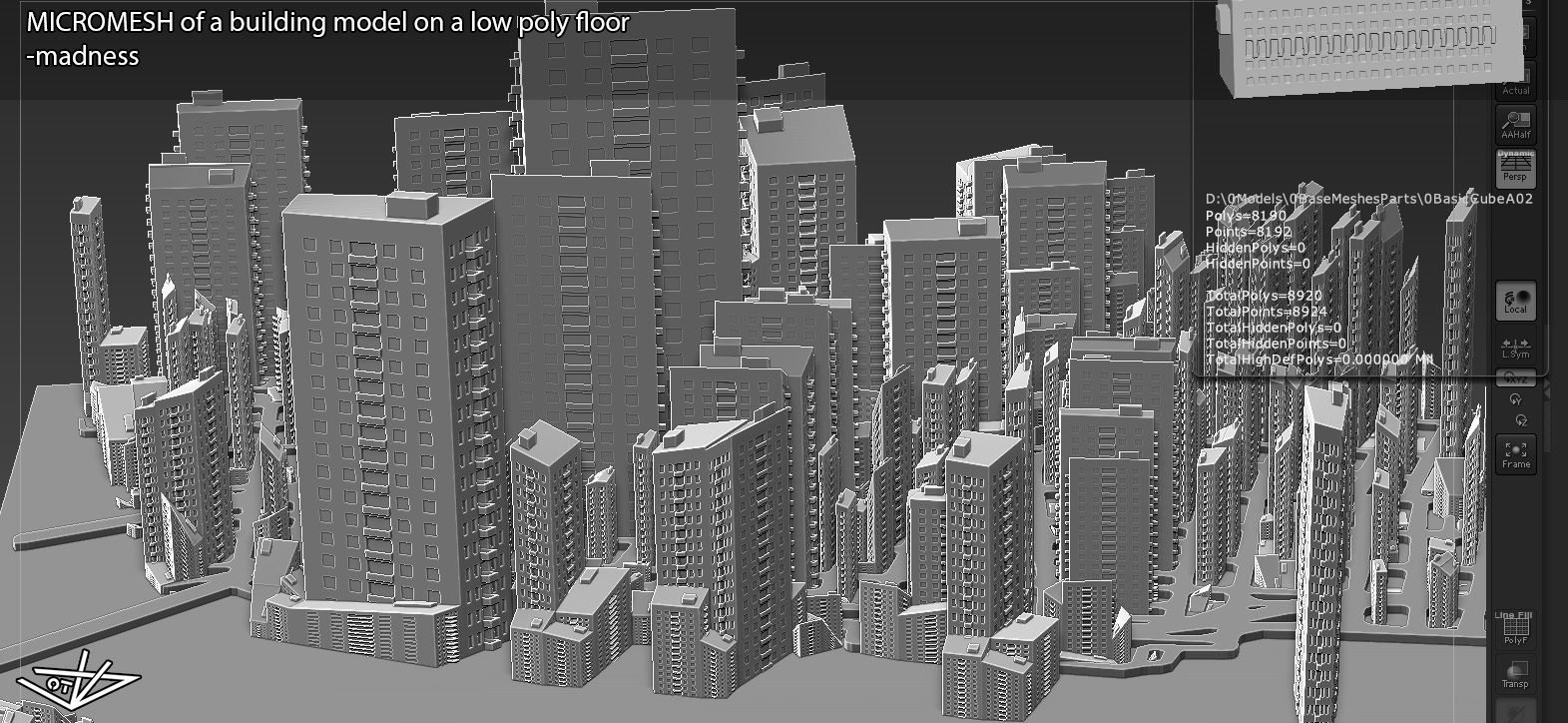
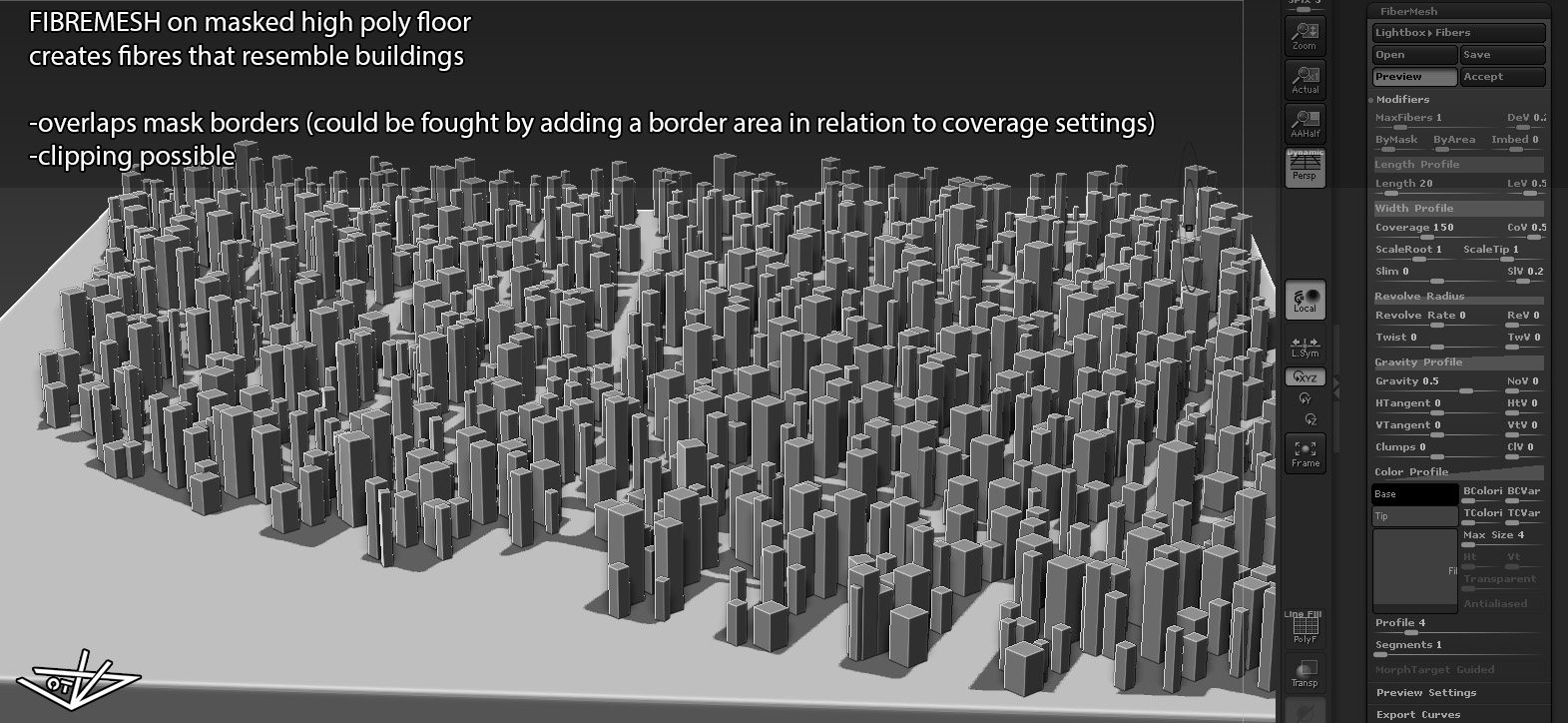
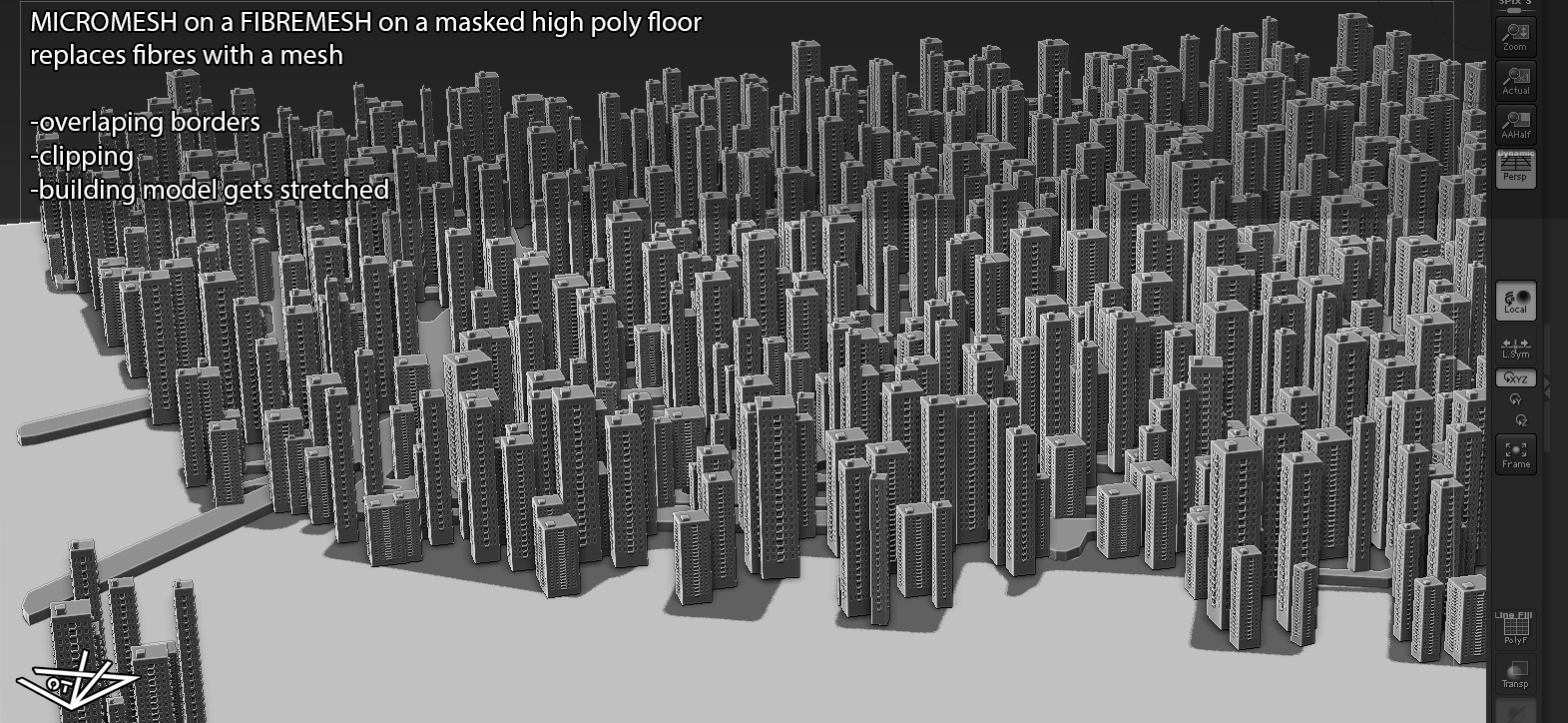
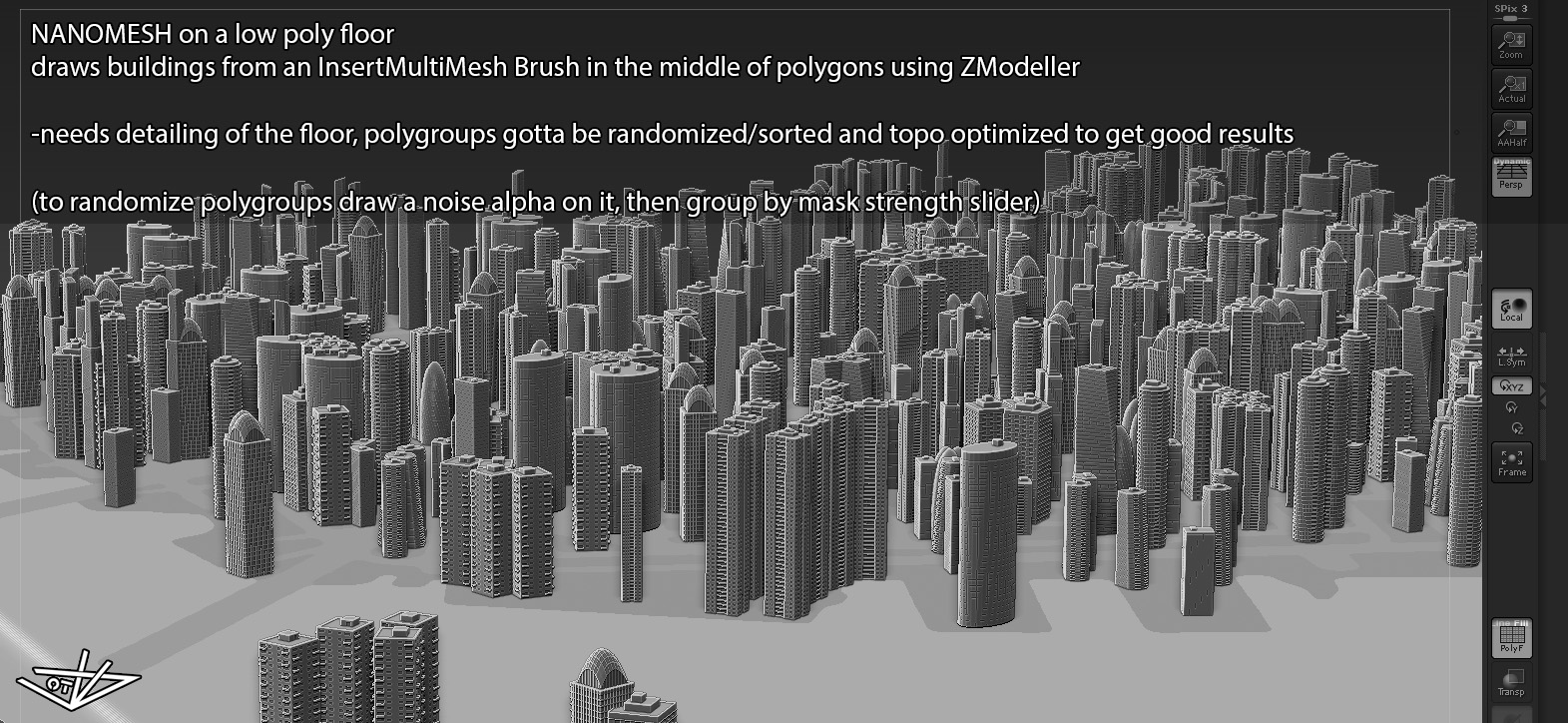
Then theres also the possible method of turning Fibres into Curves, which can use IMM brushes, enabling you to draw whole building kits with different storeys.
Im trying to figure out how to turn the rectangular curves from fibres into straight lines atm… oh ZB… hugs…
would be nice if you could randomize or swap between different IMM brush subtools procedurally somehow,
atm it requires multiple, repeated operations to draw out not just one type of building. And one has to first seperate the “floor” into groups and clean it up.
The Zmodeller “draw nanomesh” tool could probably have a modifier that swaps IMM subtools according to polygroup for example.
might be useful for other types of applications too, brickwalls, foliage, etc.
but maybe i just didnt find the way to do that yet and its already there haha… we shall see…
Attachments




found a way to turn fibermesh geometry into straight line curves that can then serve as guides for proper IMM meshes.
IMM curves offer the benefit of keeping proportions and being able to work similiar to array meshes with multiple storeys,
whilst also allowing the use of fibermesh controls that offer, for example, randomization in height or distribution.

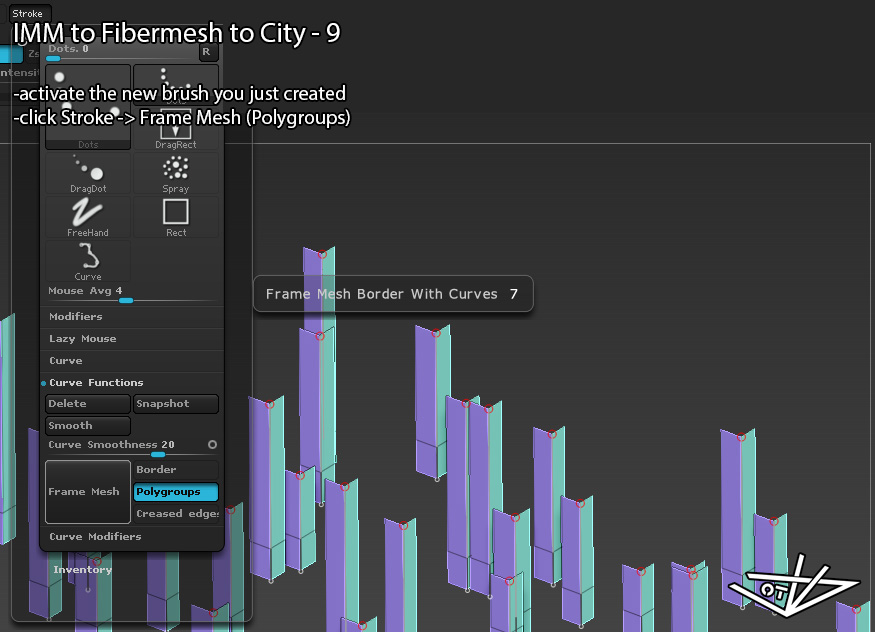
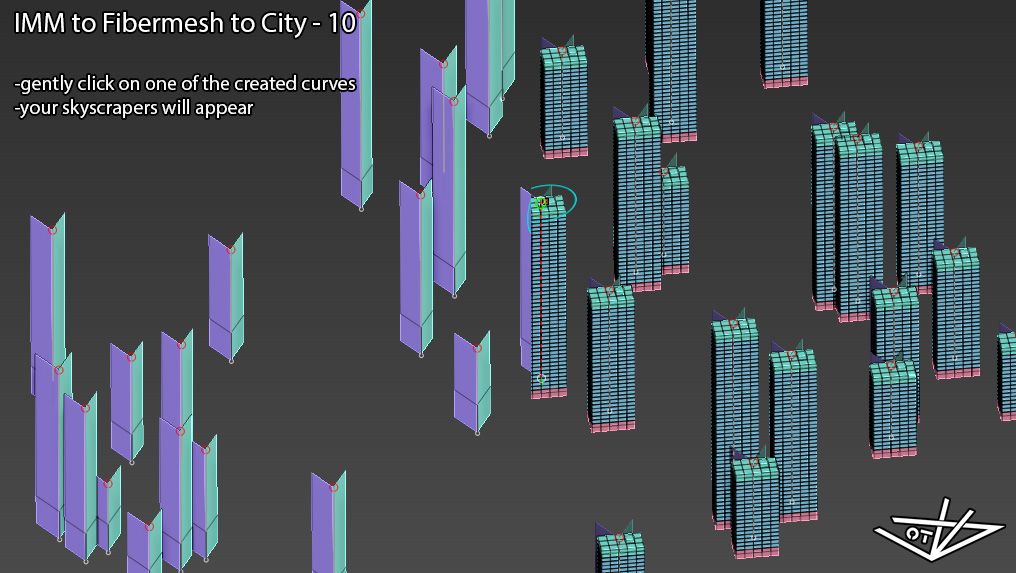
Done.
Repeat for each Building Type in your city that you want to use and adjust the original fibre mesh accordingly to cover different areas.
Attachments

update:
-nanomesh works similiar to fibremesh to create the guide geometry for the highrise curves, a tad faster even
however:
1- highrises derived from fibermesh curves are not on the same floor level! the bottom polygroup will be more or less submerged even if the curves are all at the same level
2- neither fibermesh or nanonmesh can be oriented/aligned to the screen,
-fibermesh at 0 gravity is 100 polygon normal alignment, -100 gravity is bending upwards but not fully
-nanomesh always aligns to the polygon normal, then one side abit more or less
the problem with that is for 1 that basement levels might not have doors, those might be in the ground,
and for 2 that non level floors create angled buildings that would topple in real life
trying to figure out how to angle the curves perfectly vertically now…
@TriPartBrushes
the bottom polygroup should not overlap another group  (had a tree that was higher than ground floor, curves didnt work well after)
(had a tree that was higher than ground floor, curves didnt work well after)
Helios-9F Cityscapes II
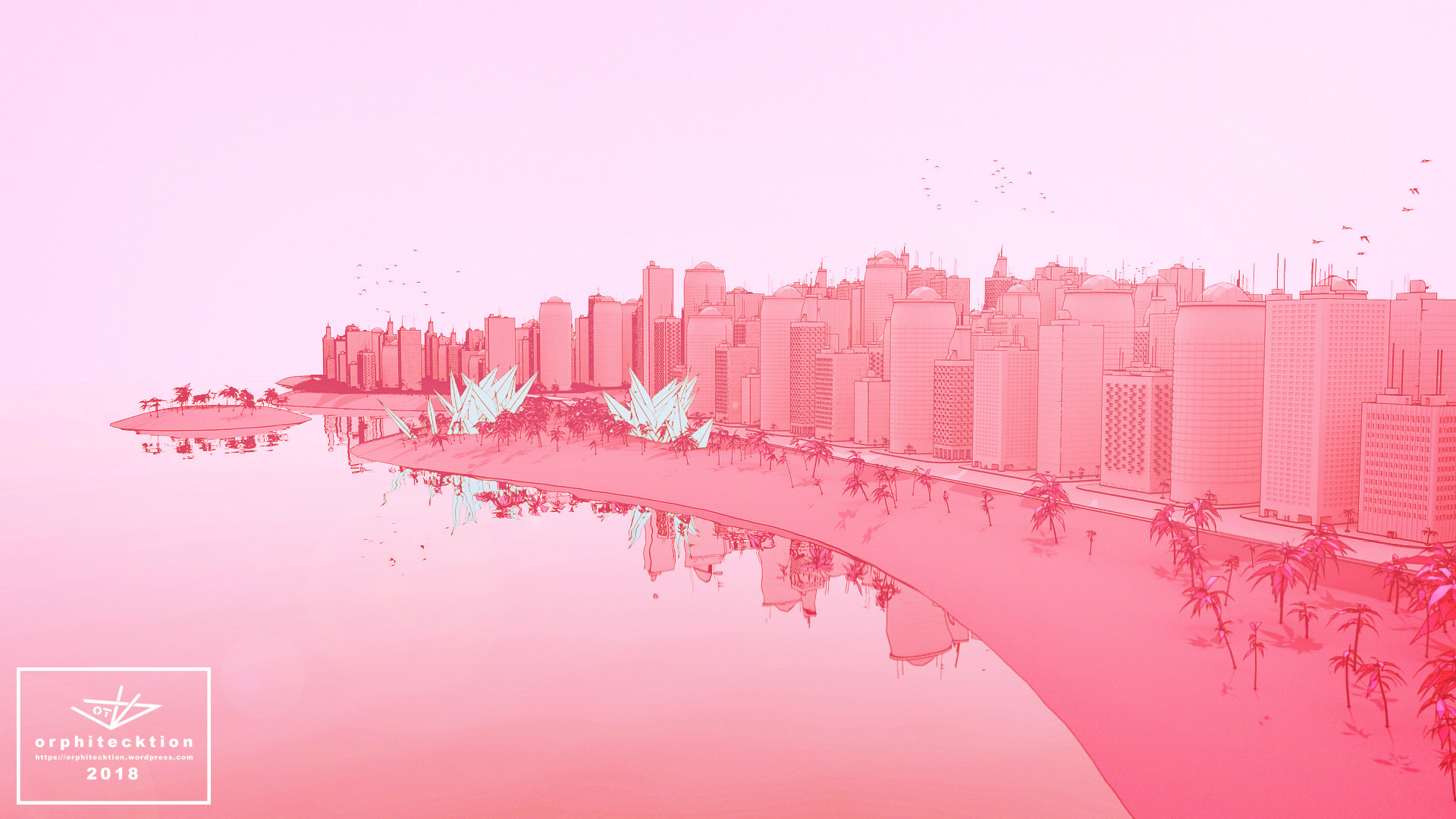
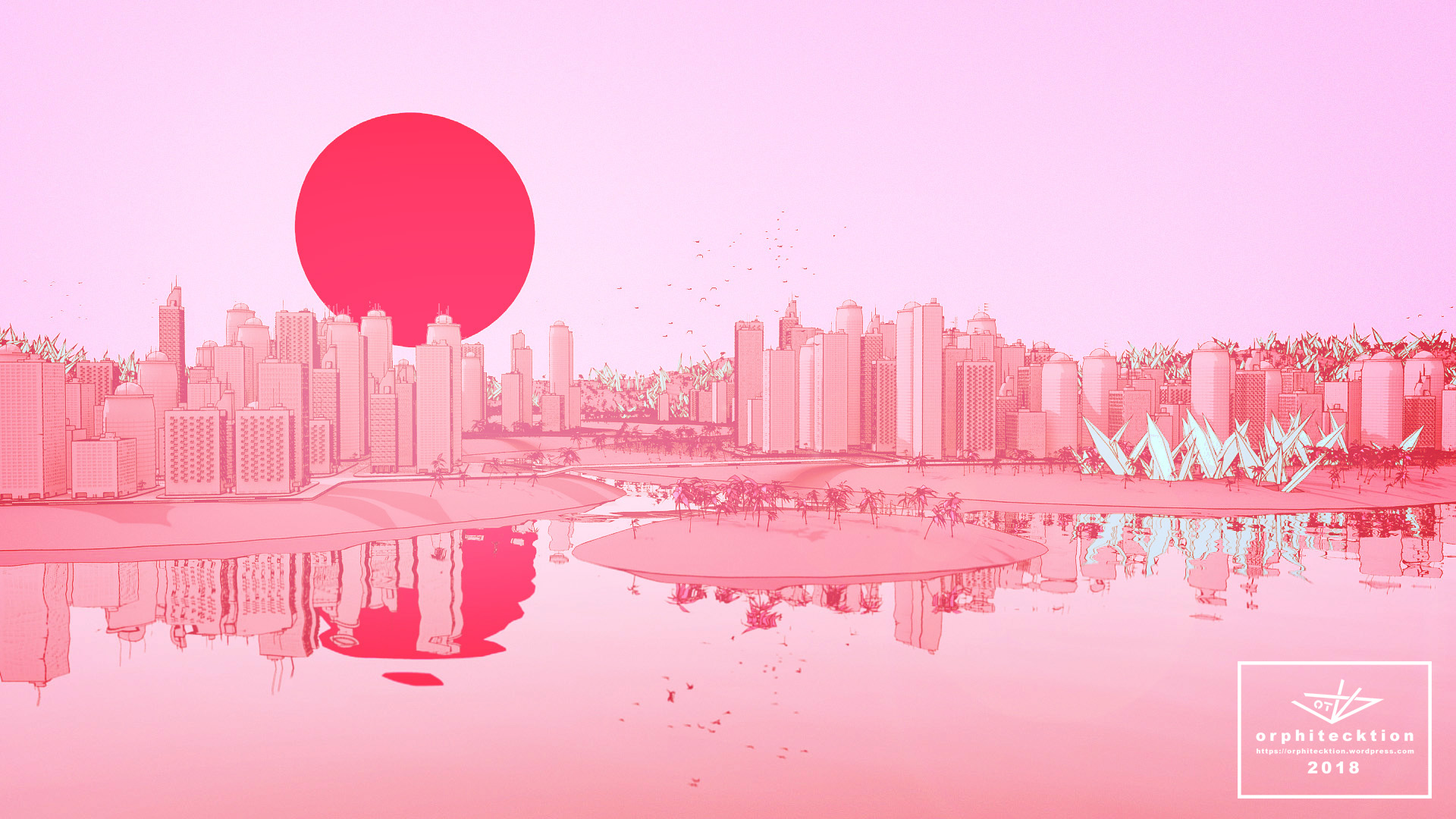
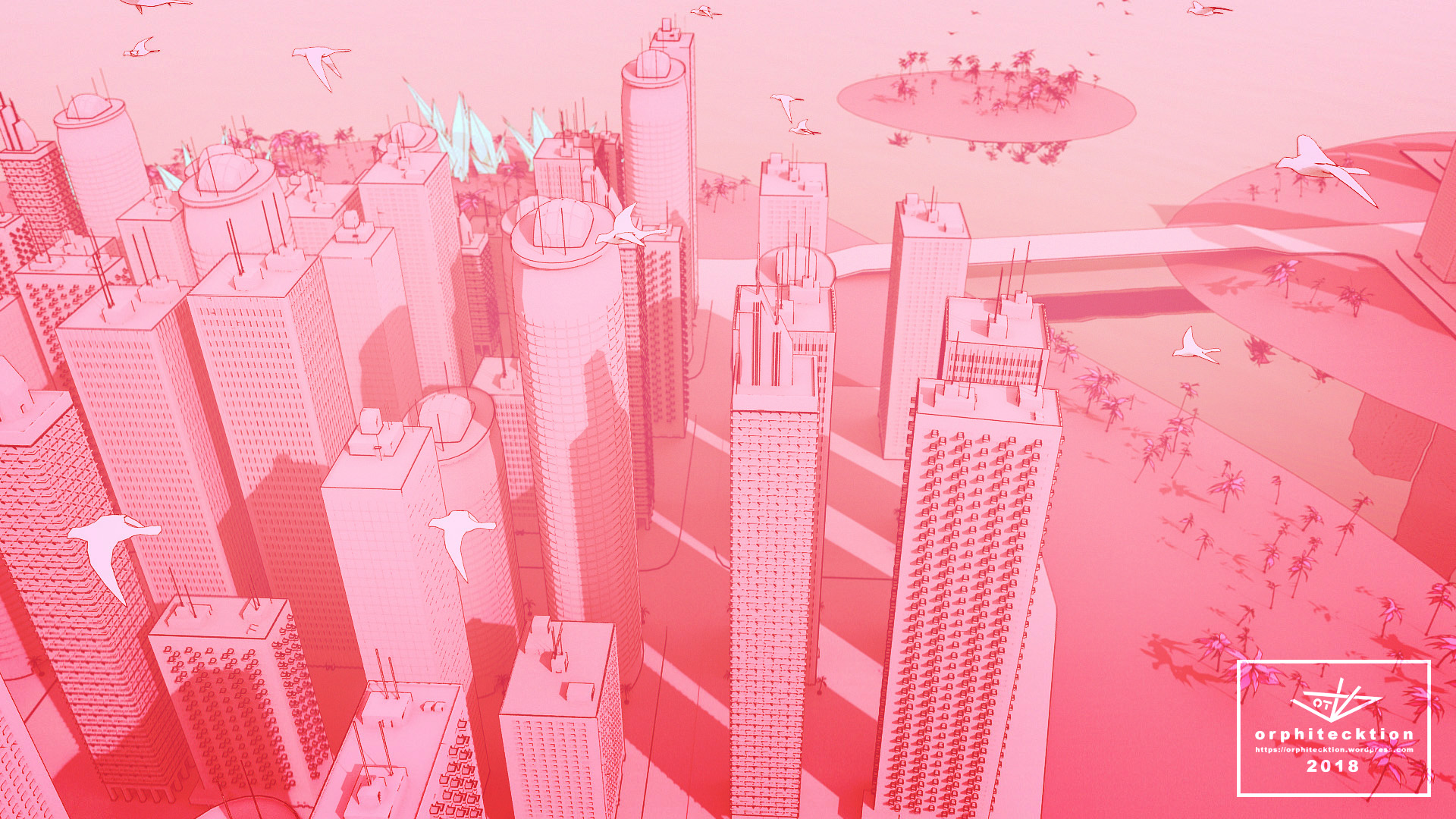
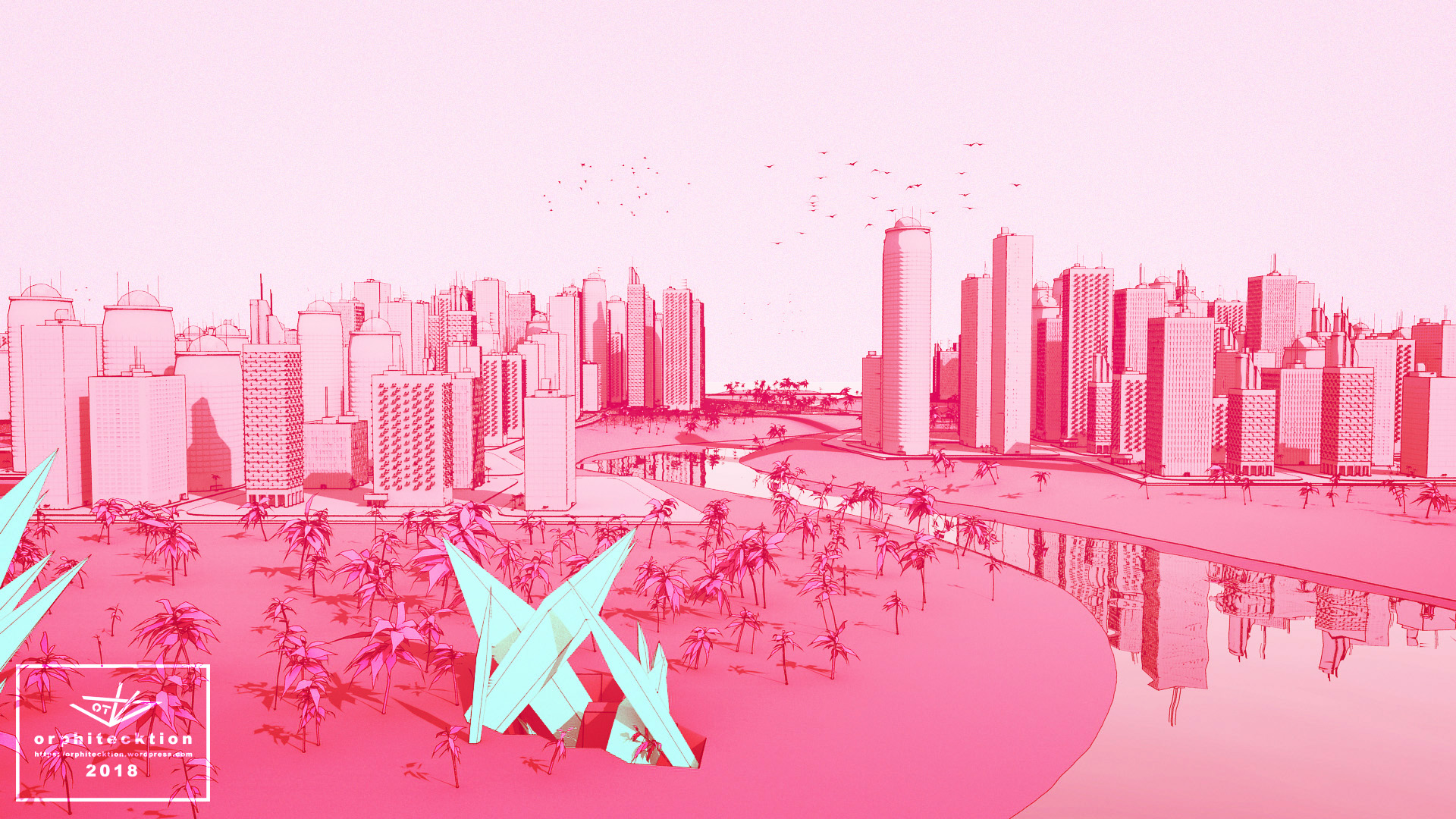
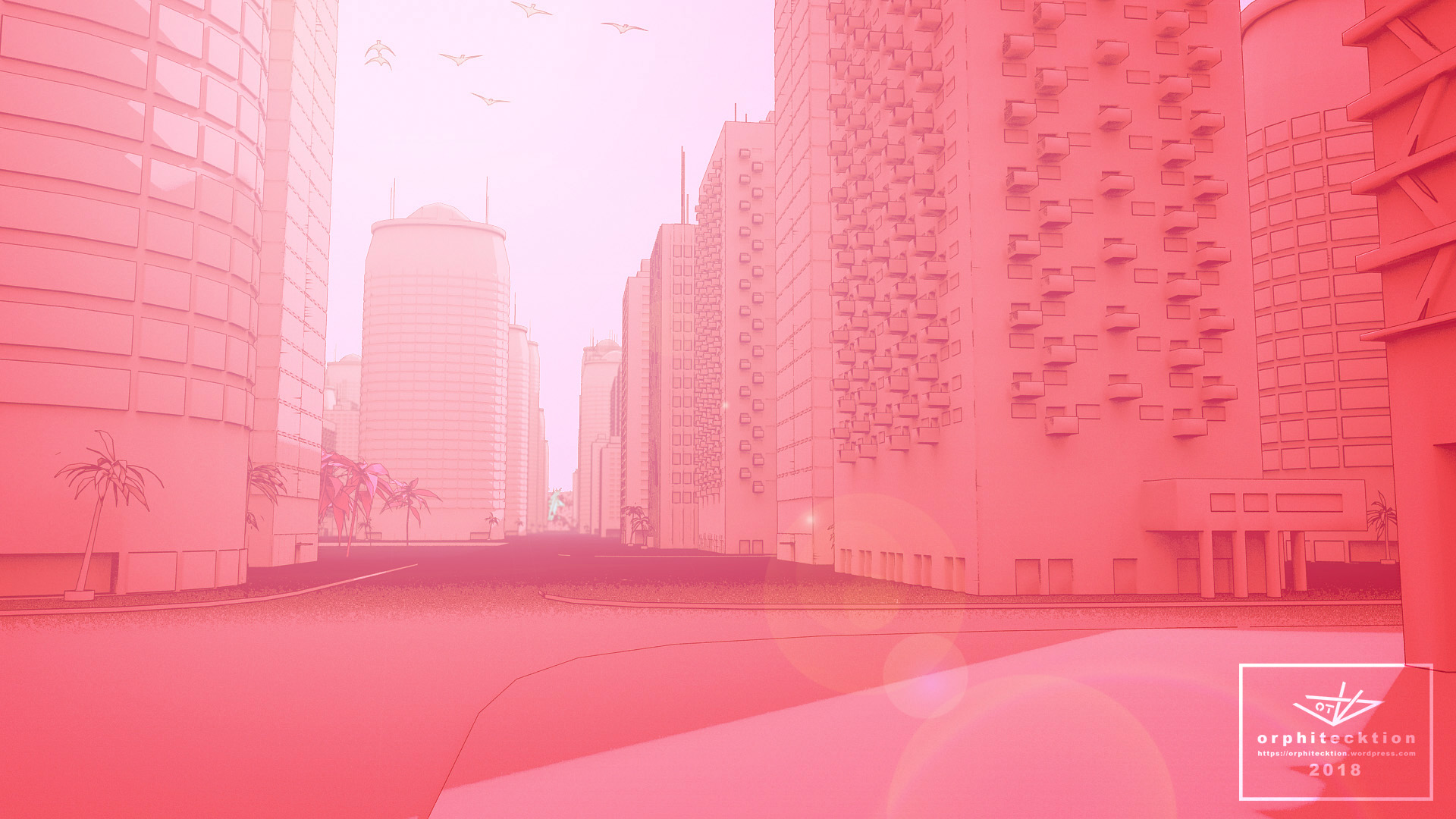
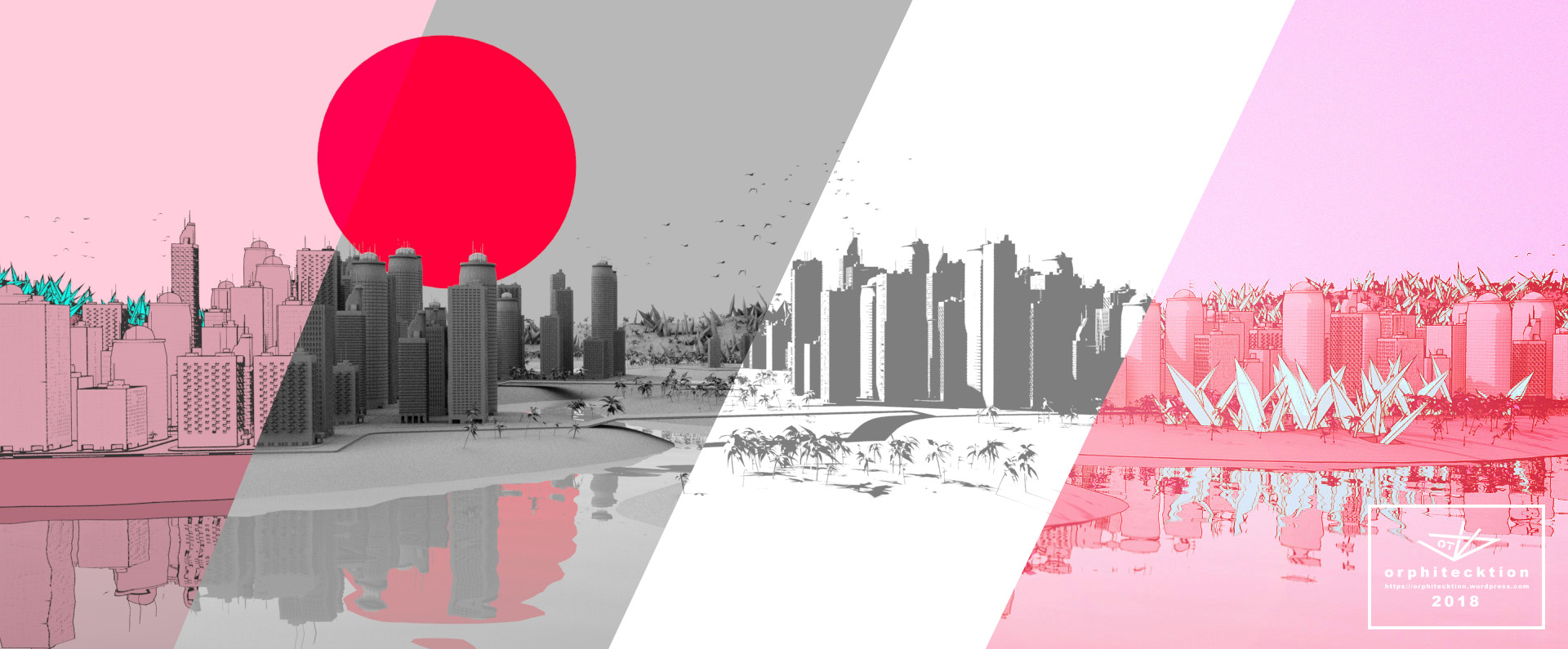
-experiments with ZB’s semi automated mass creation procedures-
~9mil points total
buildings:
6x tri mesh curves of ZModeler building with basement/storey/roof seperation
spawned similiar to above method, using an L-Shape spawned from nanomeshes to create guidecurves on the edge
-ability to orient fibers or nanomeshes to screen axis would be sweet
-nanomesh created curves seem to have the same level root as opposed to fibre mesh created curves
water:
simple plane with gentle noise deformation
terrain:
manually smoothed out environment level plates, alpha mask and polygrouping for crystal crevasses
trees:
2 level fibermesh (would be a cool addition to fibres if they had multiple levels like nanomeshes for example)
could need higher subD
trunks spawned on noised out manual masking,
leaves spawned on trunk tip polygroup
crystals:
one level fibermesh, straight, no gravity
spawned from crevasse polygroup
birds:
3 level, literally one minute, nanomesh
spawned as flocks on 4 planes, gentle randomization, same direction
could generally need more detail, especially the roadsystem and population… but hey 
Attachments






ZB has two problems with such large scenes, no matter how much you scale them:
1A:
- the unit 1, for example in welding points, can be much too large, decimals would be preferred,
scaling doesnt change that, you have to split up your object into proportionally smaller subtools so that 1 (of 100) doesnt merge half your model
1B:
- very long thin strips of geometry are not fully sculptable, at a certain extent it simply stops being affected and you need to move the screen, the affectable area appears to be a radius not a cube
both are related to the 1000x1000 units size of objects as mentioned in dynamesh i assume
some things that would have been nice to have while making this:
-
ability to only weld masked or unmasked points
-
screen orientation for nanomeshes or fibers would be cool for buildings since surface normal might be angled, buildings aint angled
-
merging nanomesh/micromesh and fibermesh into one tool would be a thought aswell, theyre quite similiar
-
some way to add more, secondary polygroups to tri brushes, so one could, in my example, group the windows or pot palm trees for materials etc…
(tho im currently wondering if one couldnt just drag out cube and cylinder shaped fibermeshes and then add windows and detail via nanomesh… mmmmh)
Helios 9F Jungle
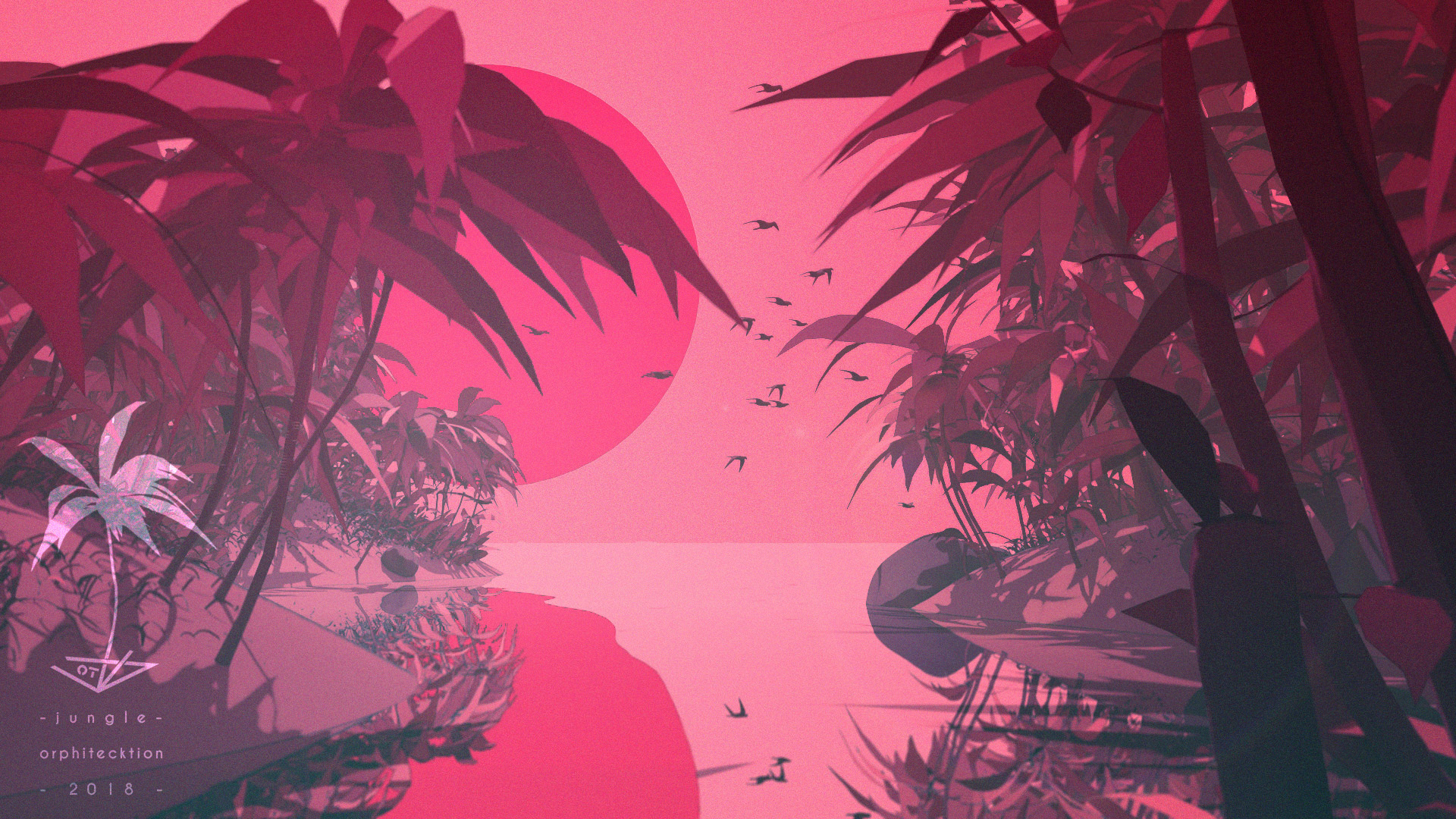
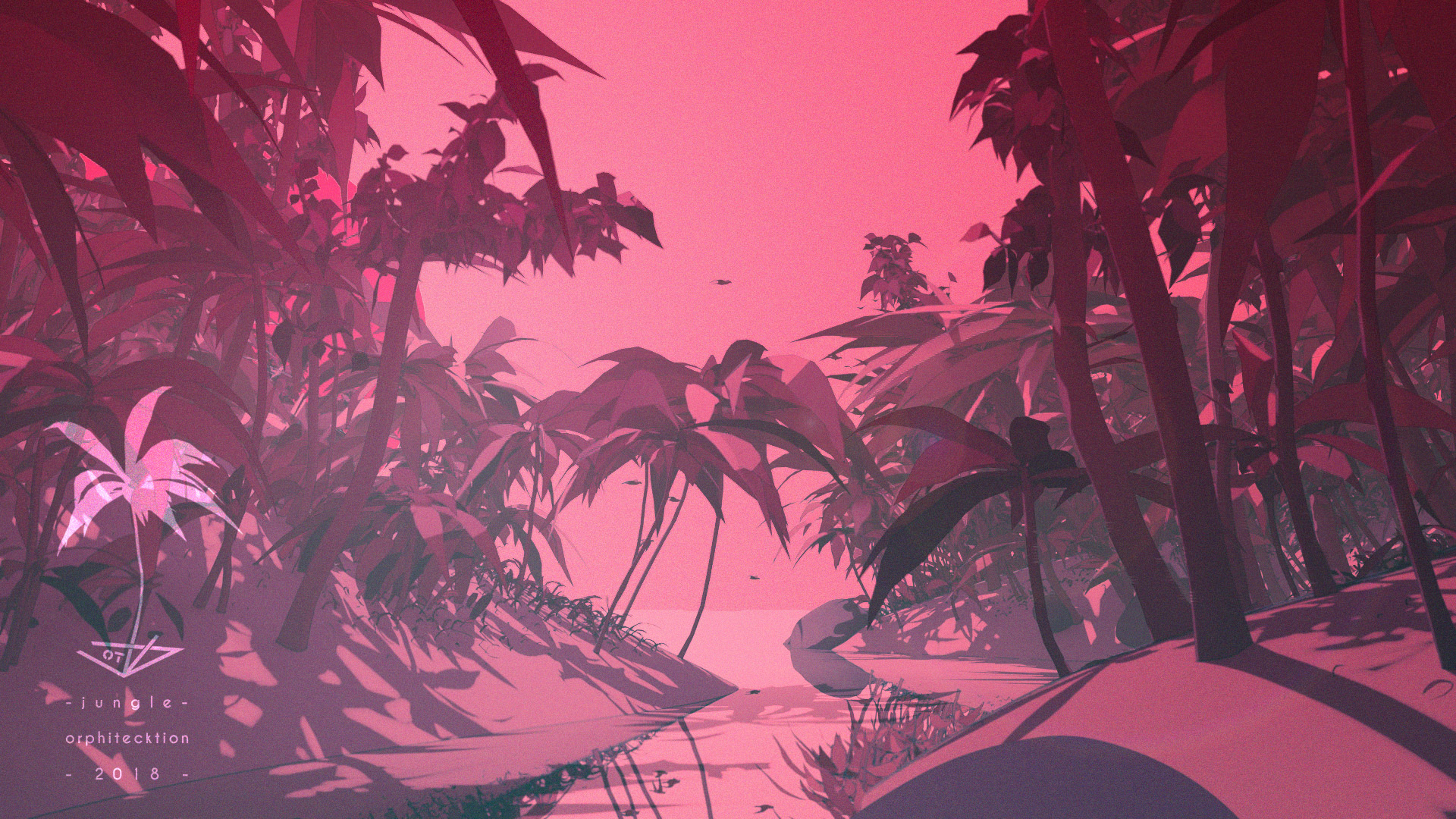
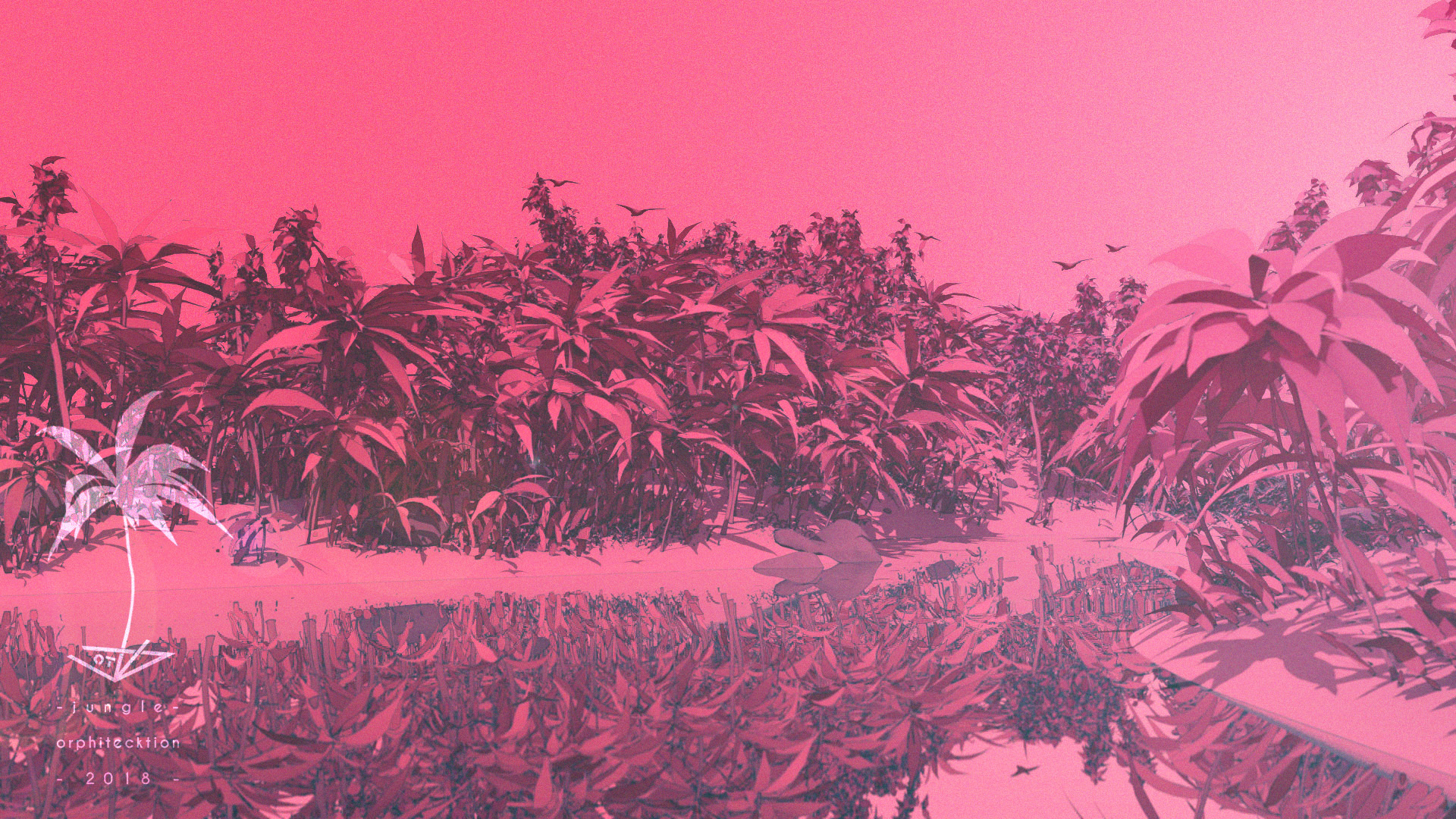
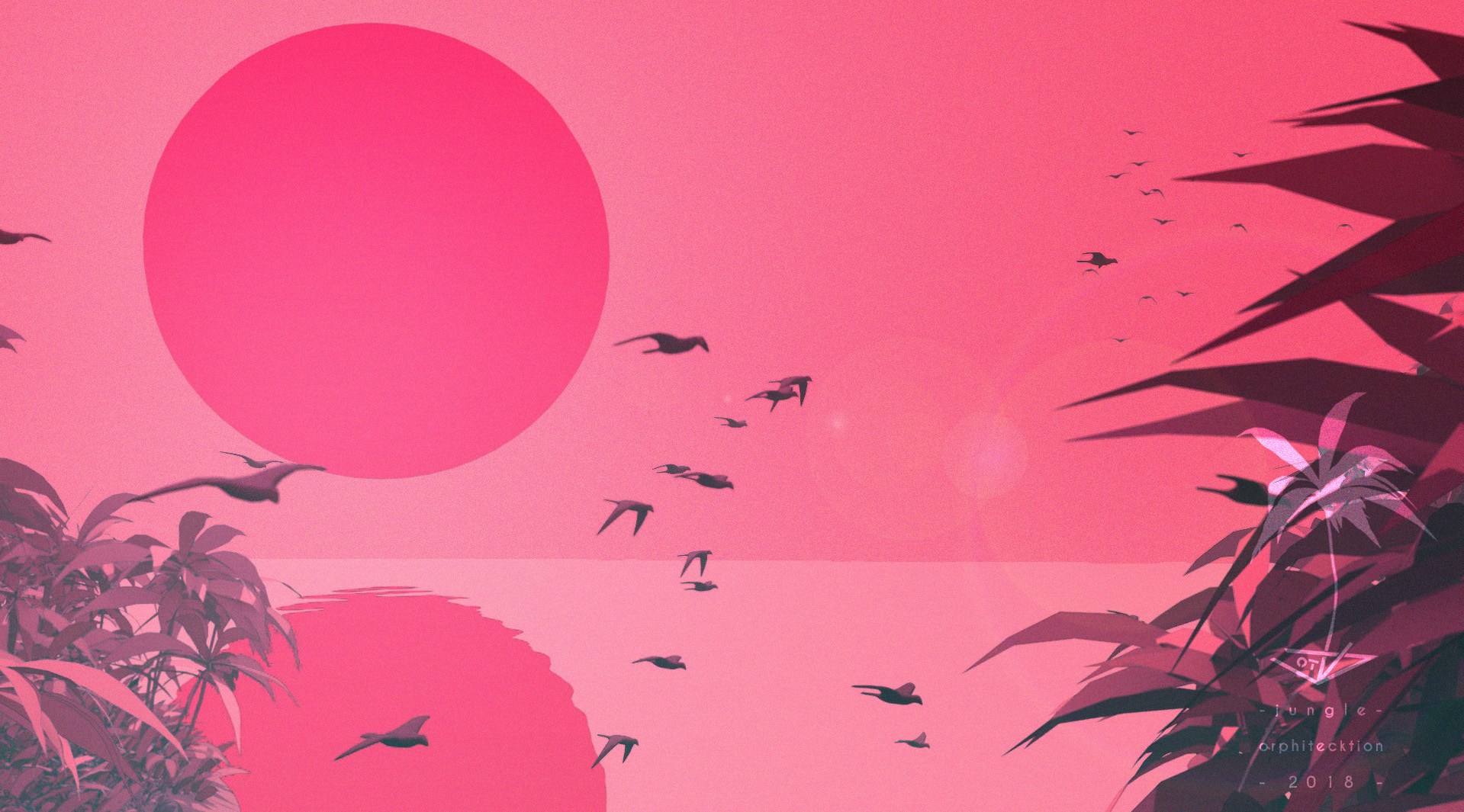
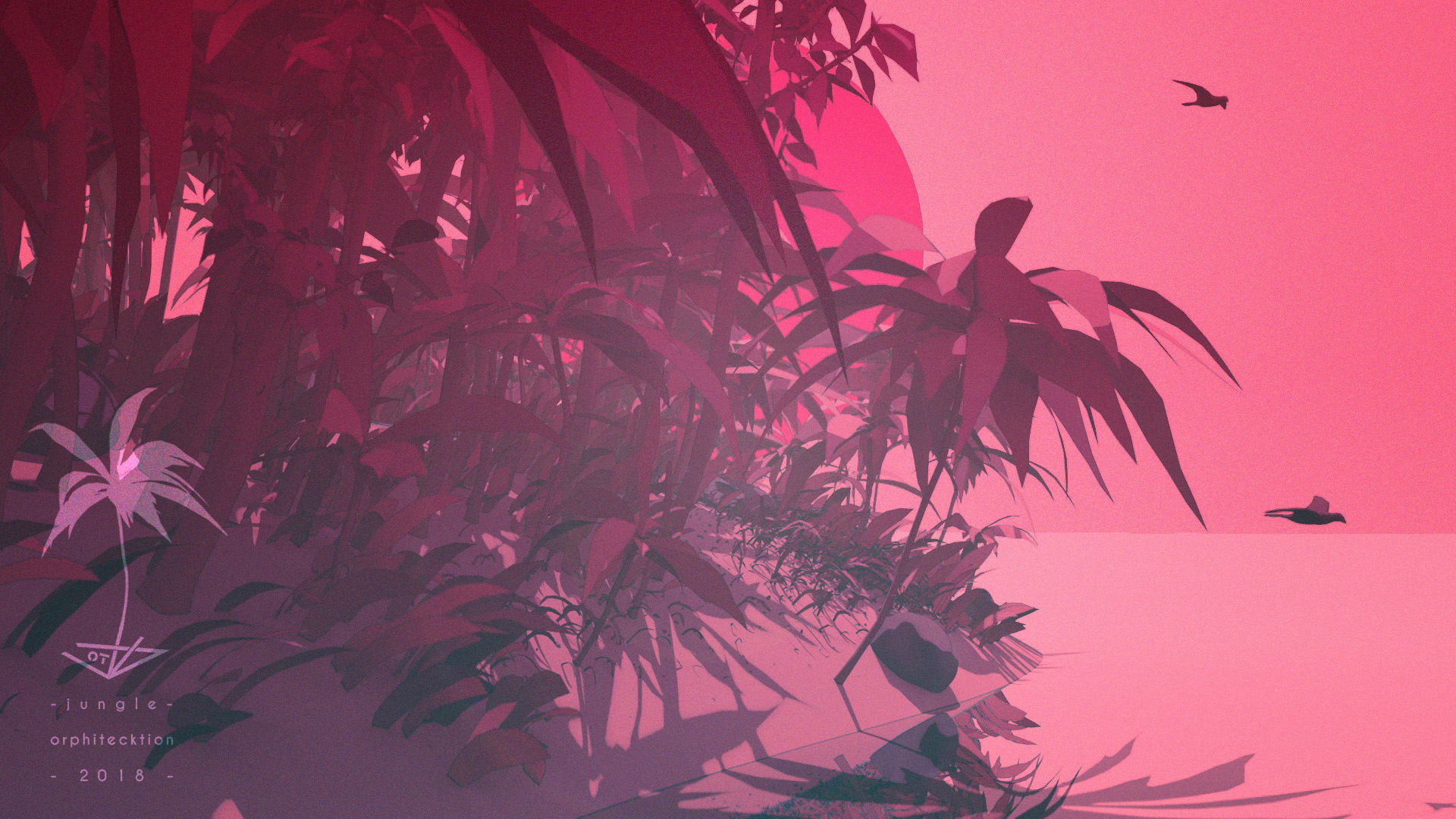
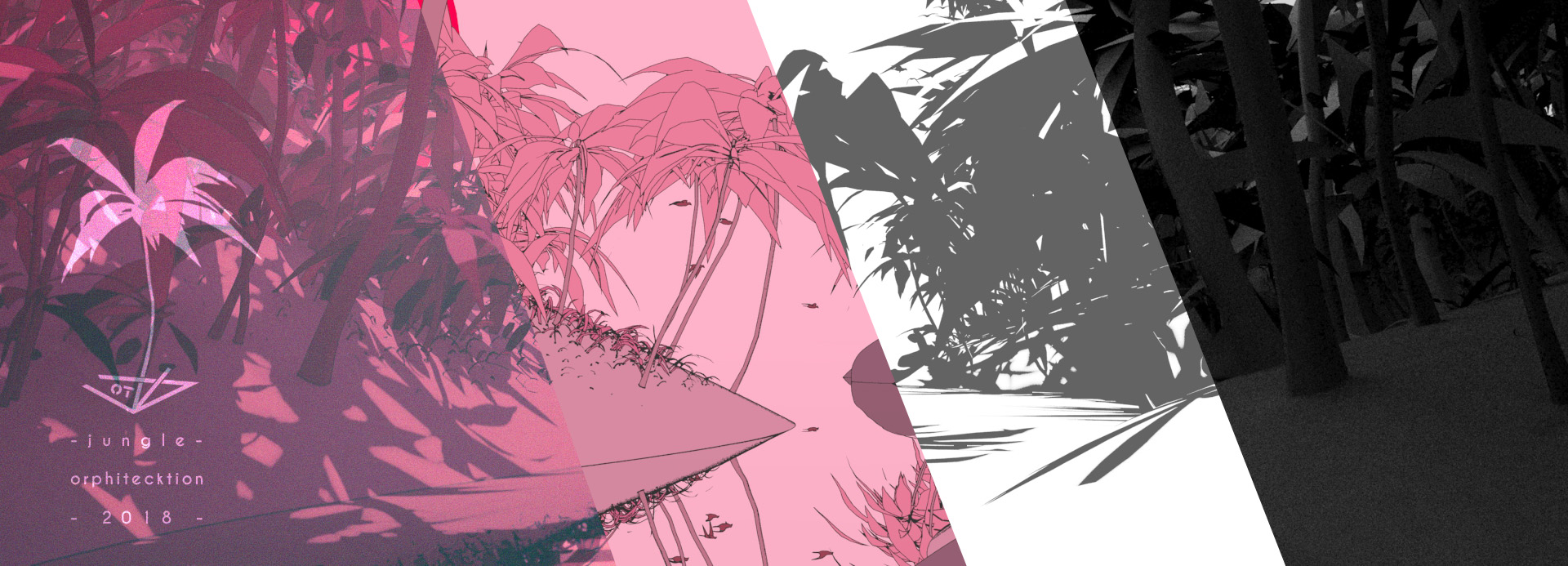
relaxing procedural doodle
-fibremesh rocks and trees
-nanomesh birds
-lots of pink, magenta i mean
Attachments






Svenska Vitlök
swedish garlic
peaceful doodle after an older photo i shot
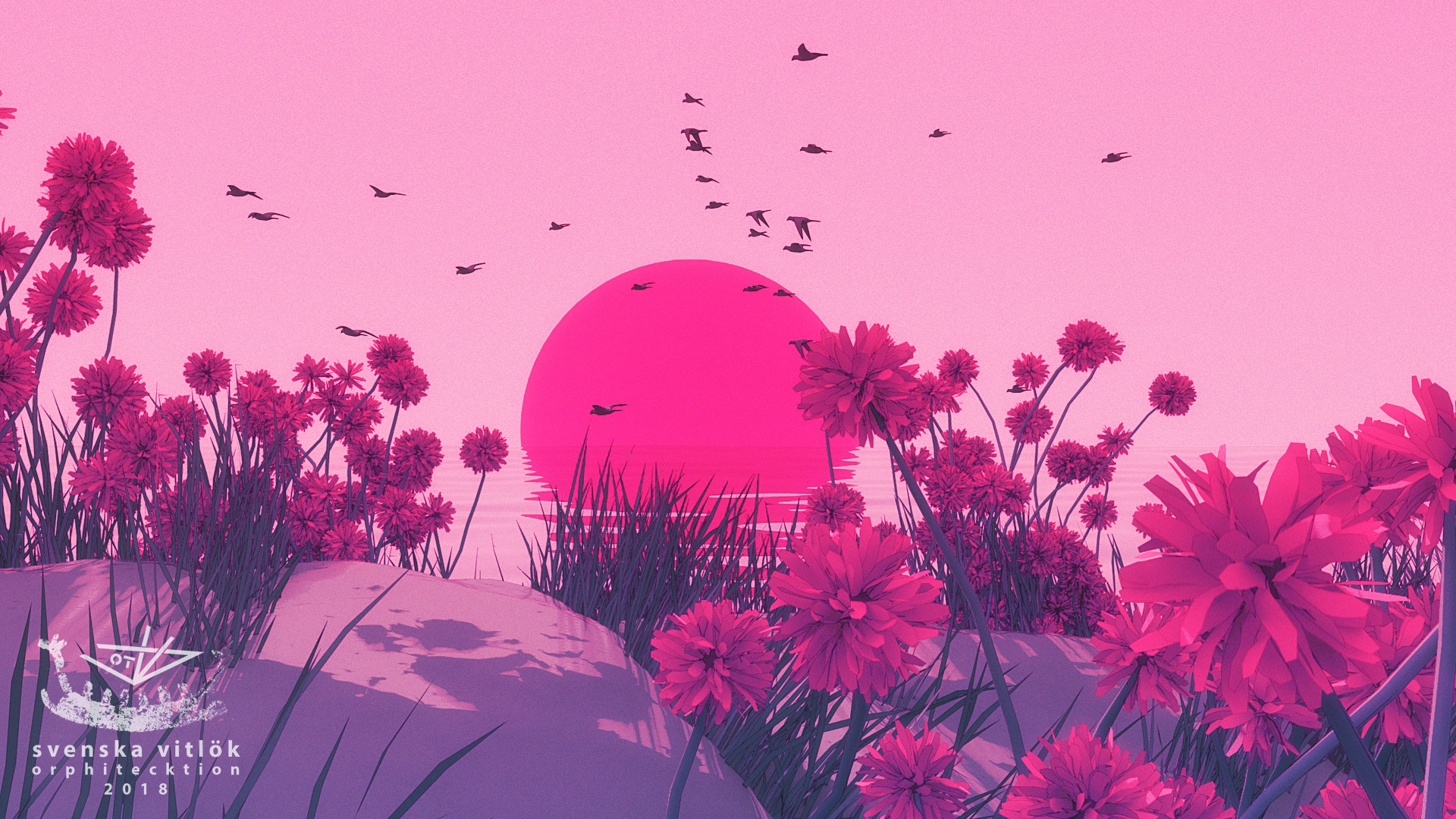
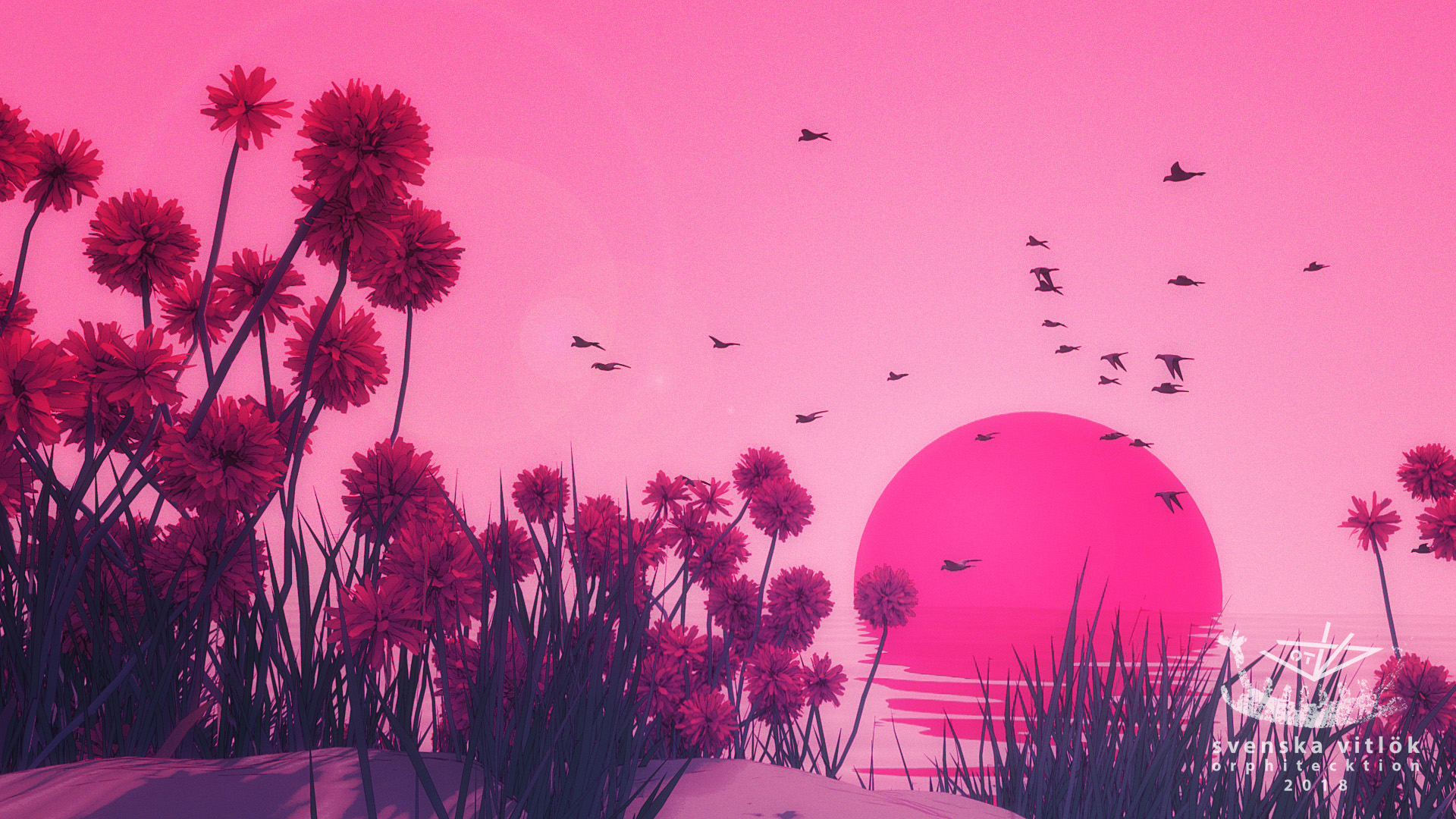
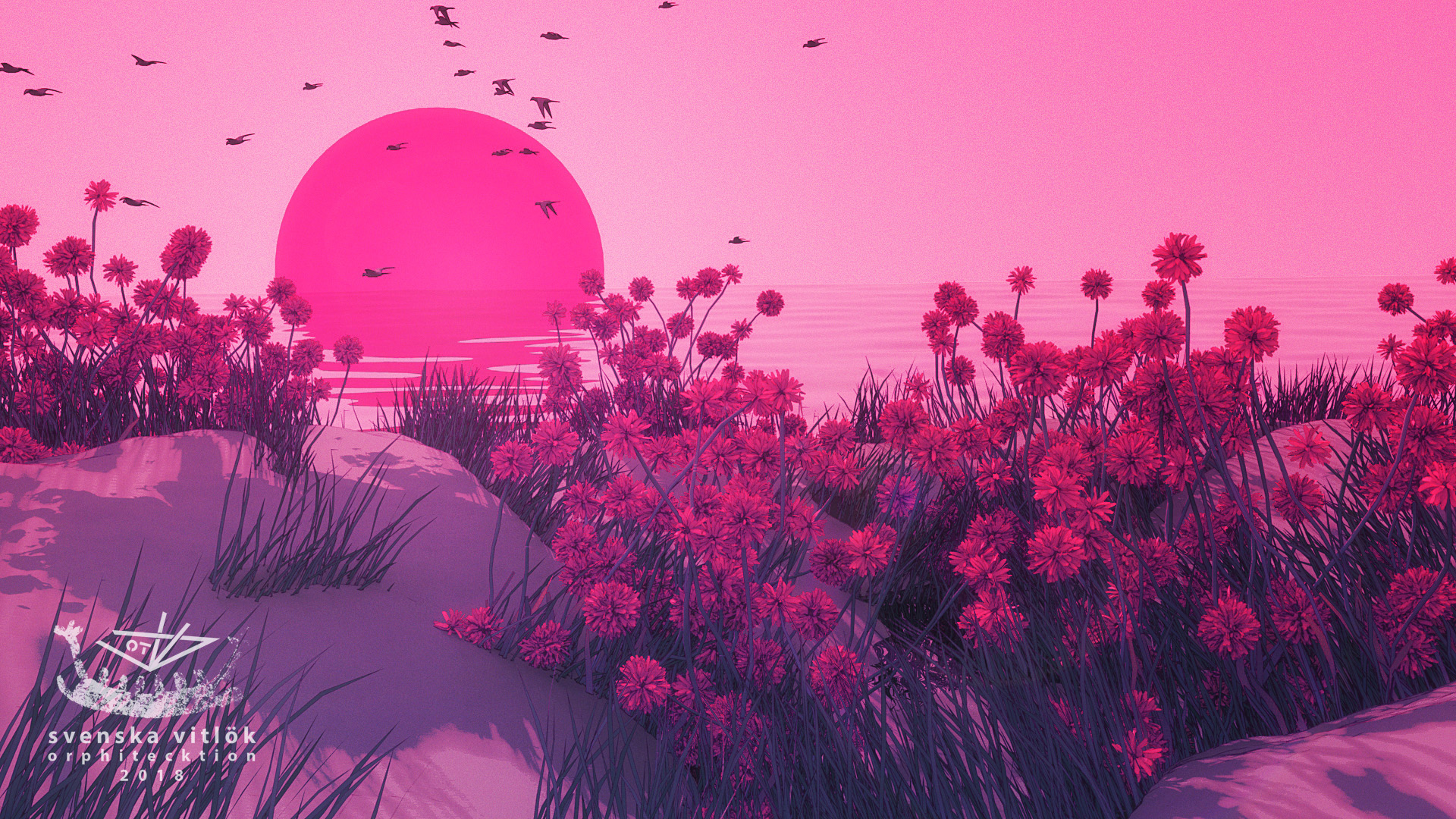
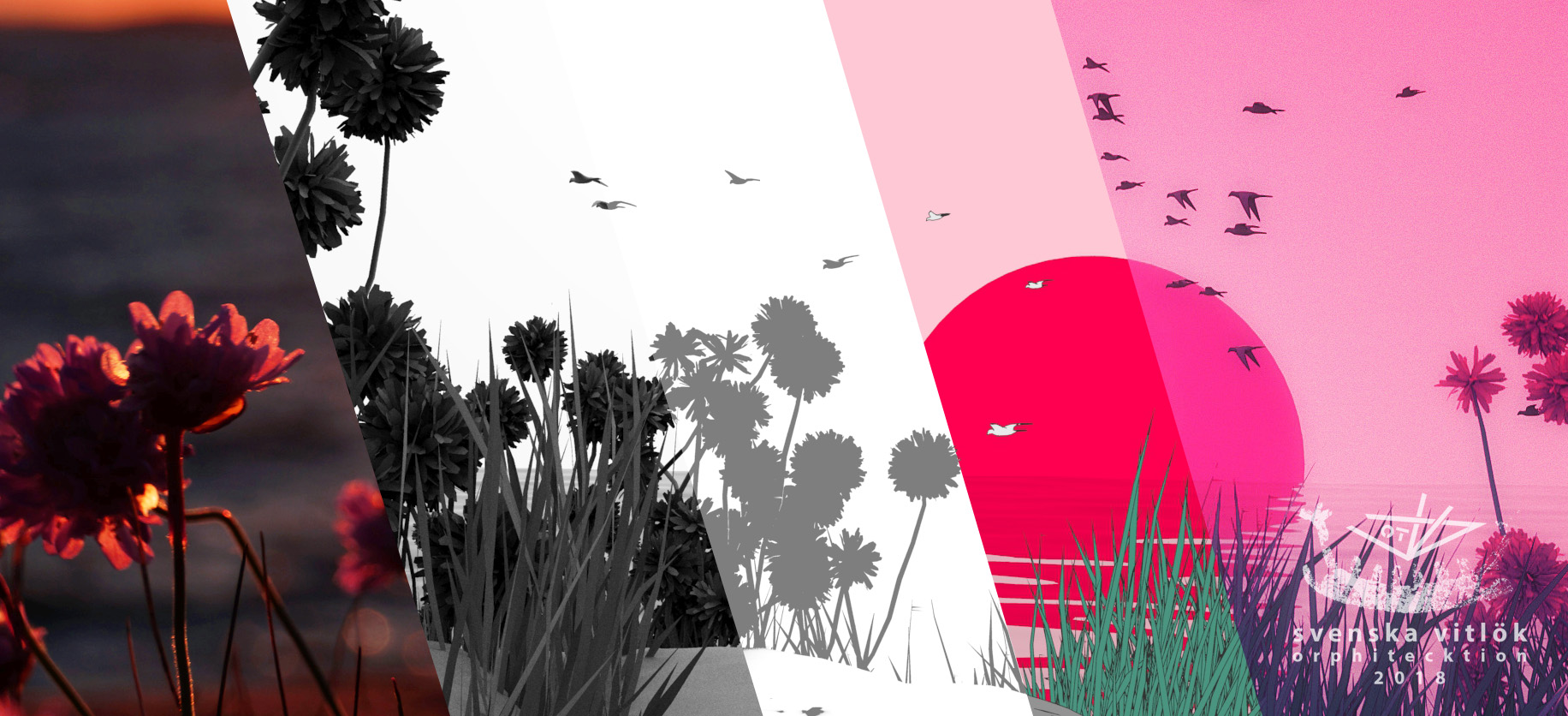
fibermeshes all over, same old birds, good birds, very loyal
Attachments




… some very interesting experiments indeed.
I think you’re right.
Maybe Pixologic can refine some of the older features that you mentioned, such as the Weld options.
We definitely need more precision at times.
Don’t get me started on fumbling with Alpha placement…:)<label for=“rb_iconid_7”></label>
Anyway, I love the way you think outside the box to stay working in ZBrush.
Who needs other Apps anyway?:p:D
All the best,
Neil
thank you Neil 
@alpha placement
- use square and center buttons for decals and such to keep proportions
- use UV maps for surface alphas
- some brush settings allow spacebar to reposition the alpha
but i agree would be nice to be able to position it perfectly, like drawing it out from one point to another,
a snap to point feature would generally be nice, at least in low poly applications, curves have that feature -.- but curves are finicky and like persian cats or somin, very delicate XD,
but you could probably make a uv mapped plane to position your alpha and then use a curve to get it in place -.-
for the last few scenes i didnt use real alphas tho, just some noise masking to split stuff into naturalisticly grown polygroups,
would be important tho if you make a real city or whatever and use height and road maps that need to match, i suggest UVs for accuracy in that case,
match em i photoshop and use the same, duplicated ground object with the same UVs to project onto
and heck, i need other apps all the time XD
realflow for proper fluid stuff, max for uv fixing and complex animations, smooth groups and such, ps or premiere for post, marv designer for cloth or some photometry apps to capture realistic objects…
but do i always need those?
no, but i almost always need ZB somewhere in between if not for the most and fundamental part, and i rarely ever use anything but ZB for personal edutainment like these projects,
i like my hammer and my chisel, no blisters even, its just so intuitive once you get into ZB, i probably use other apps for much longer and wouldnt say ZB has a fancy UI, but no other app is so much fun…
if i may inject an anecdote here, i worked on some indie movie’s final cg scene and had to literally make a turd… floating through water… to shape a word… it was, without any negativity, a **** job…
but i enjoyed to scratch the cracks and wrinkles into that turd 
ZB talks to my creative and entertainment side of the brain more than it is bothered by the technicality some apps throw at you,
which is all cool and useful, but i dont need to think about every fricking vertice all the time if i just wanna make a banana,
at some point, for production for example, i have to think about it again of course and ZB often enough lets you do that too,
just use the most productive, easy and enjoyable method you can think off…
after testing huge scenes out now i must say its not optimal to do it in ZB,
its very fast once you get a workflow going, did the last two scenes in one, extended day, but the size restrictions in sliders, brush sizes, max affected area, etc are a bit limiting in terms of scene size,
for true CAD you would need better snap and numerical settings for angles and positions etc, and proper splines to work with.
as i see it atm, ZB is most geared towards detailed, human sized characters, and you can stretch that meaning into a low detailed city, a medium detailed forest or an ultra high detail earring,
but you gotta split it up at some point and work with subtools to keep growing your scene and adding detail… but even then it stays relatively fast compared to points on screen and such…
i easily could still work in realtime on my last 9mil points city which i could hardly have done in archicad for example…
Sounds like you had to literally polish a turd, Jay! :D:D :lol:
Thanks for your thoughts and experiments…
Neil
